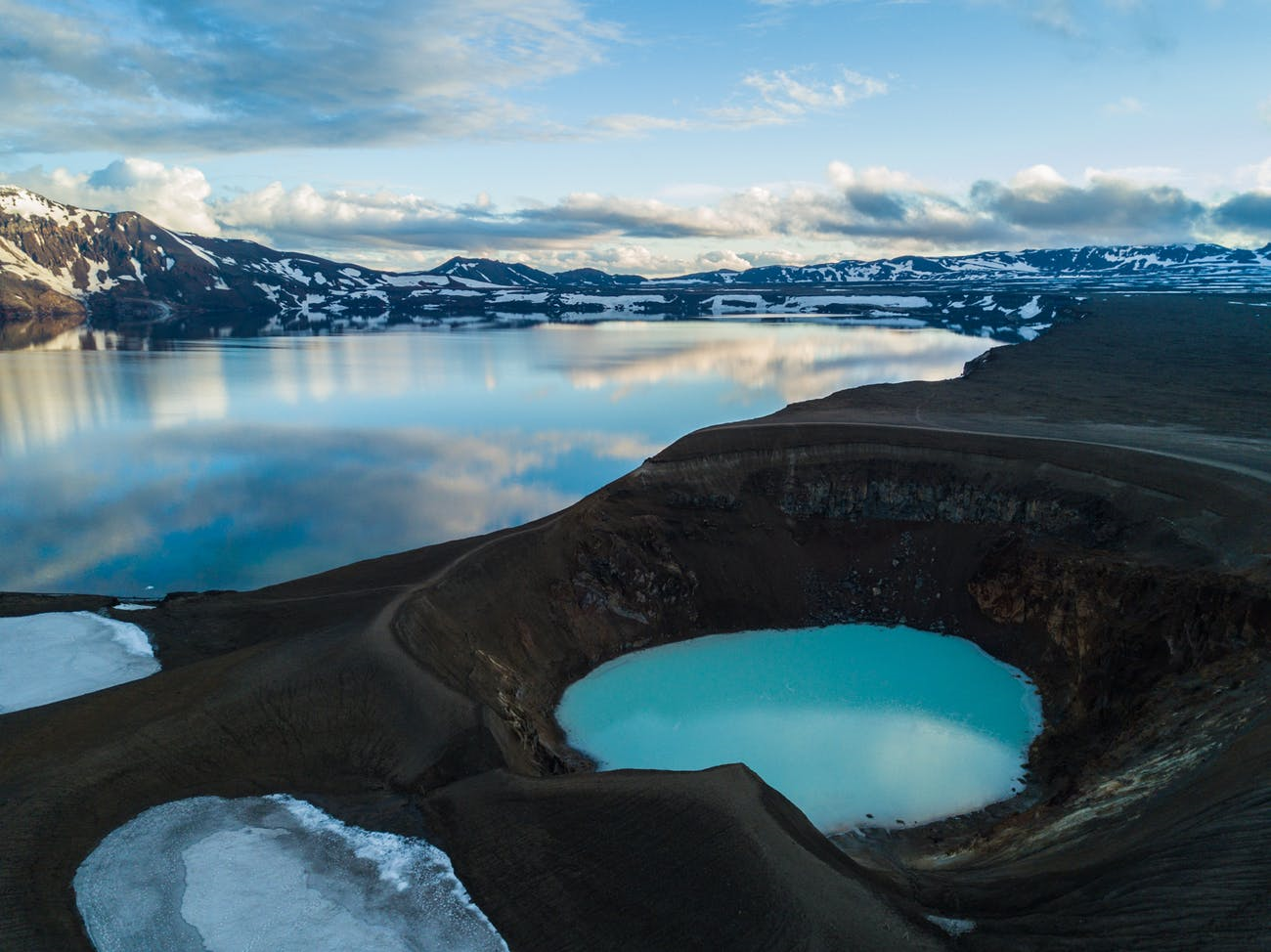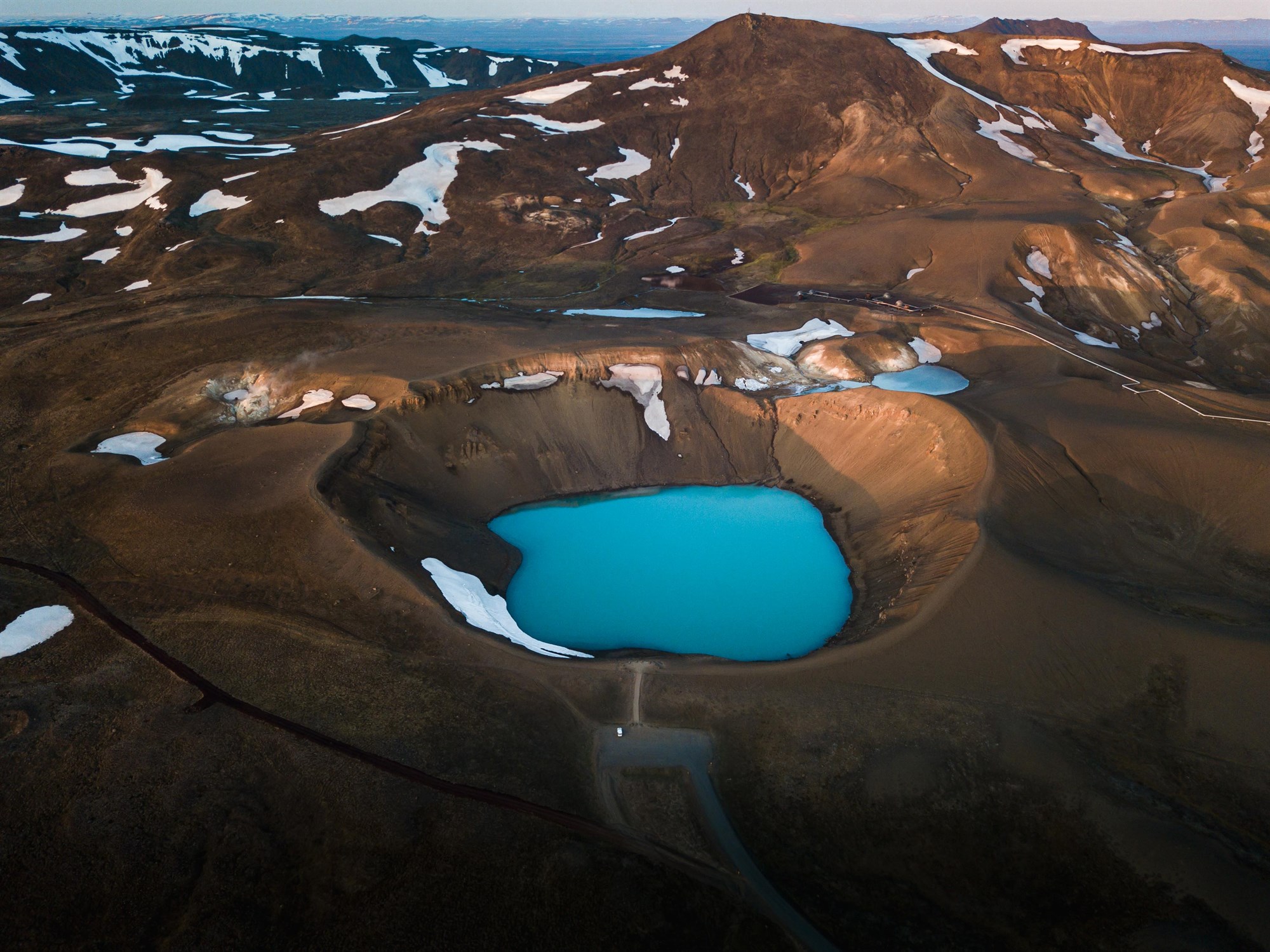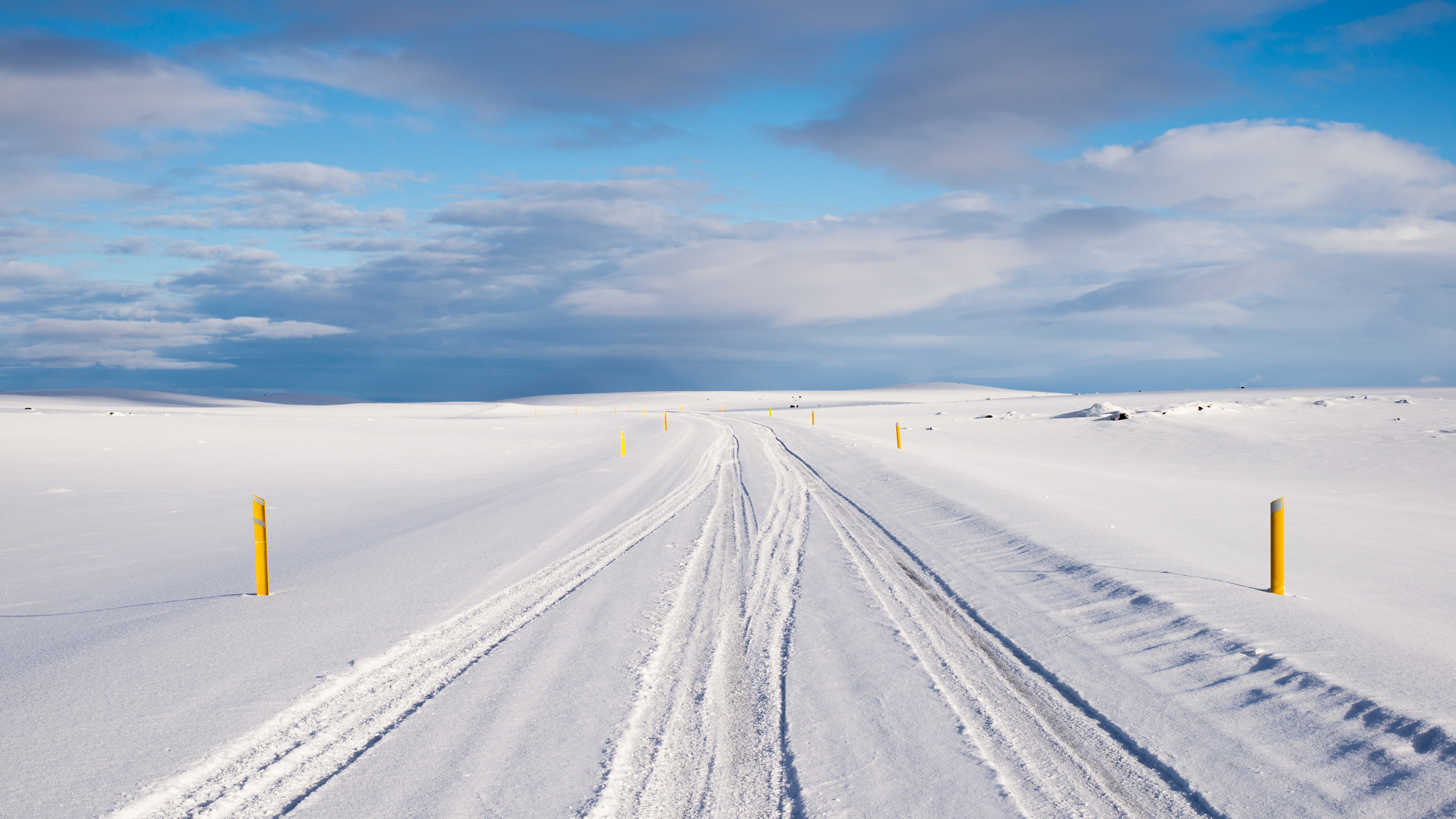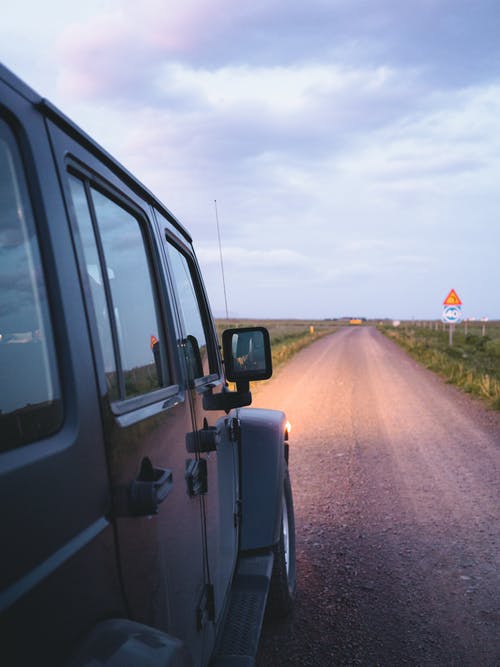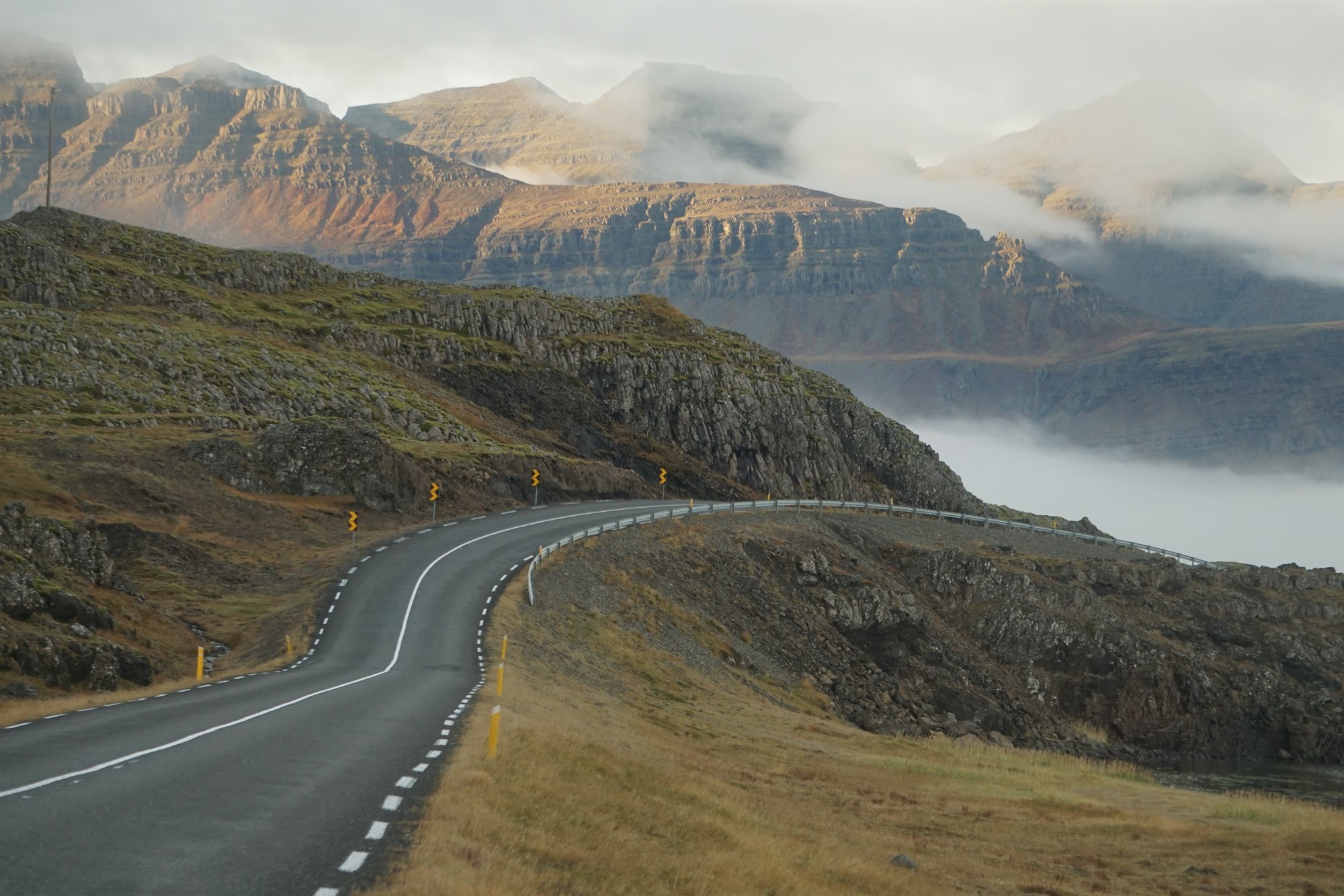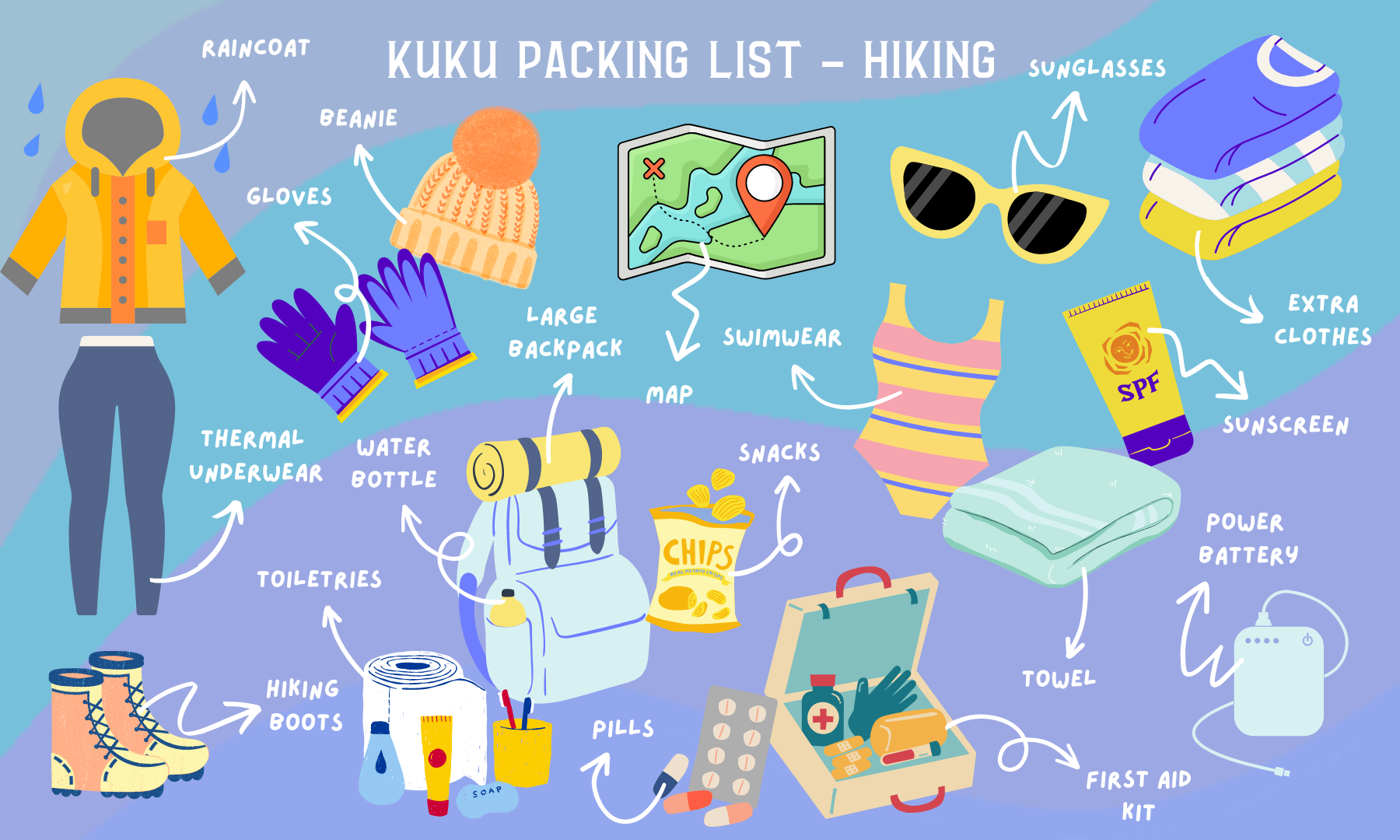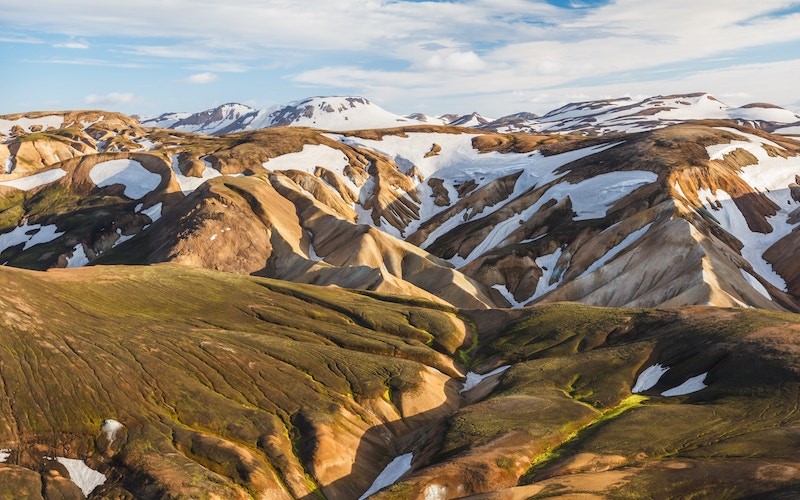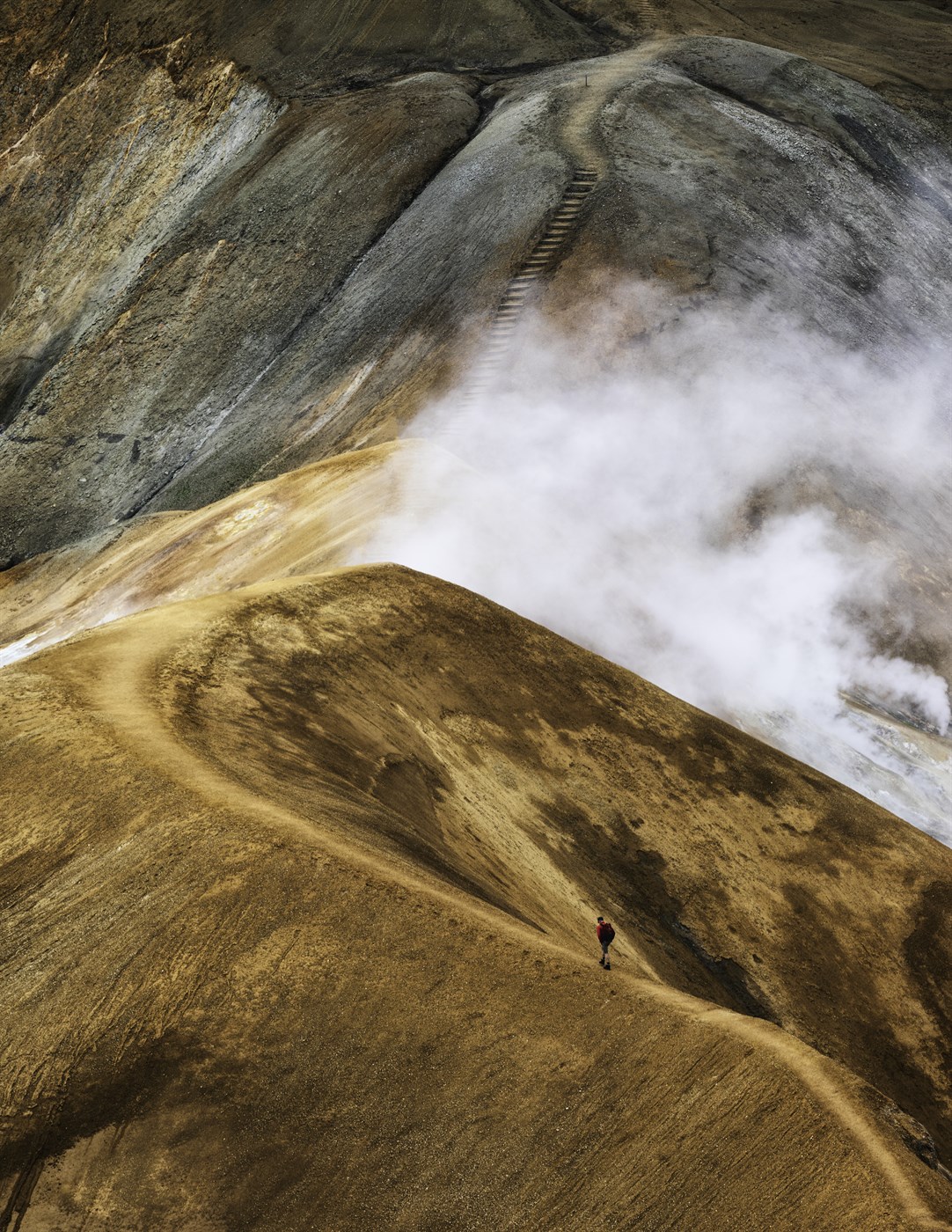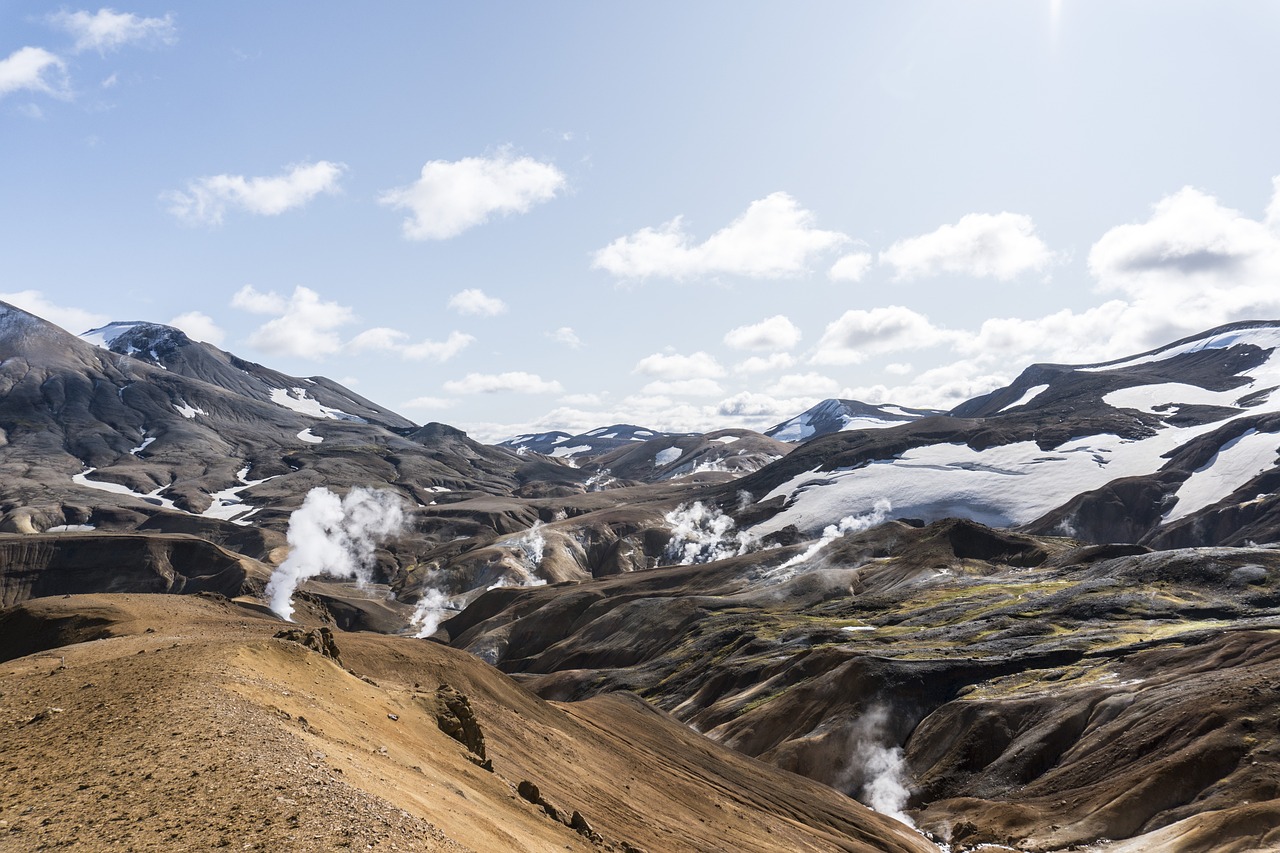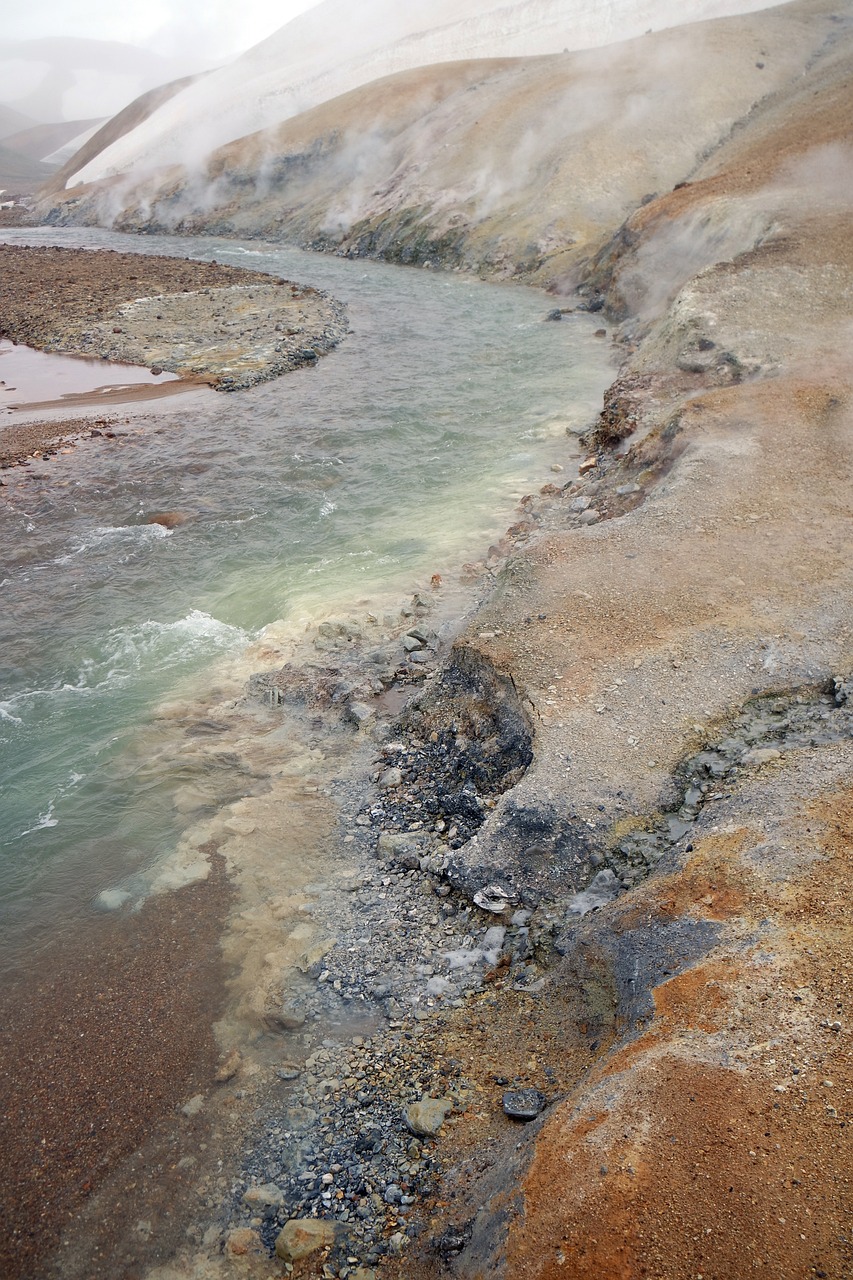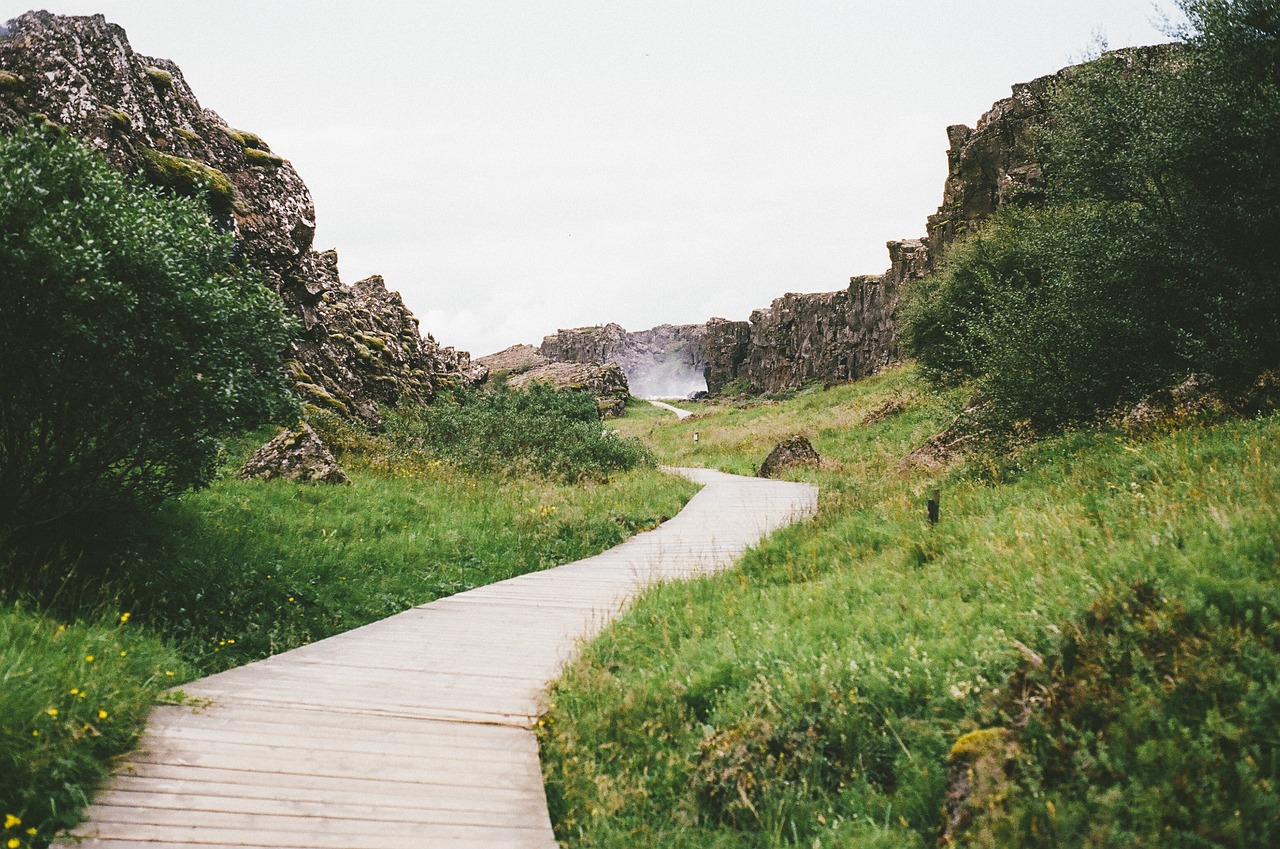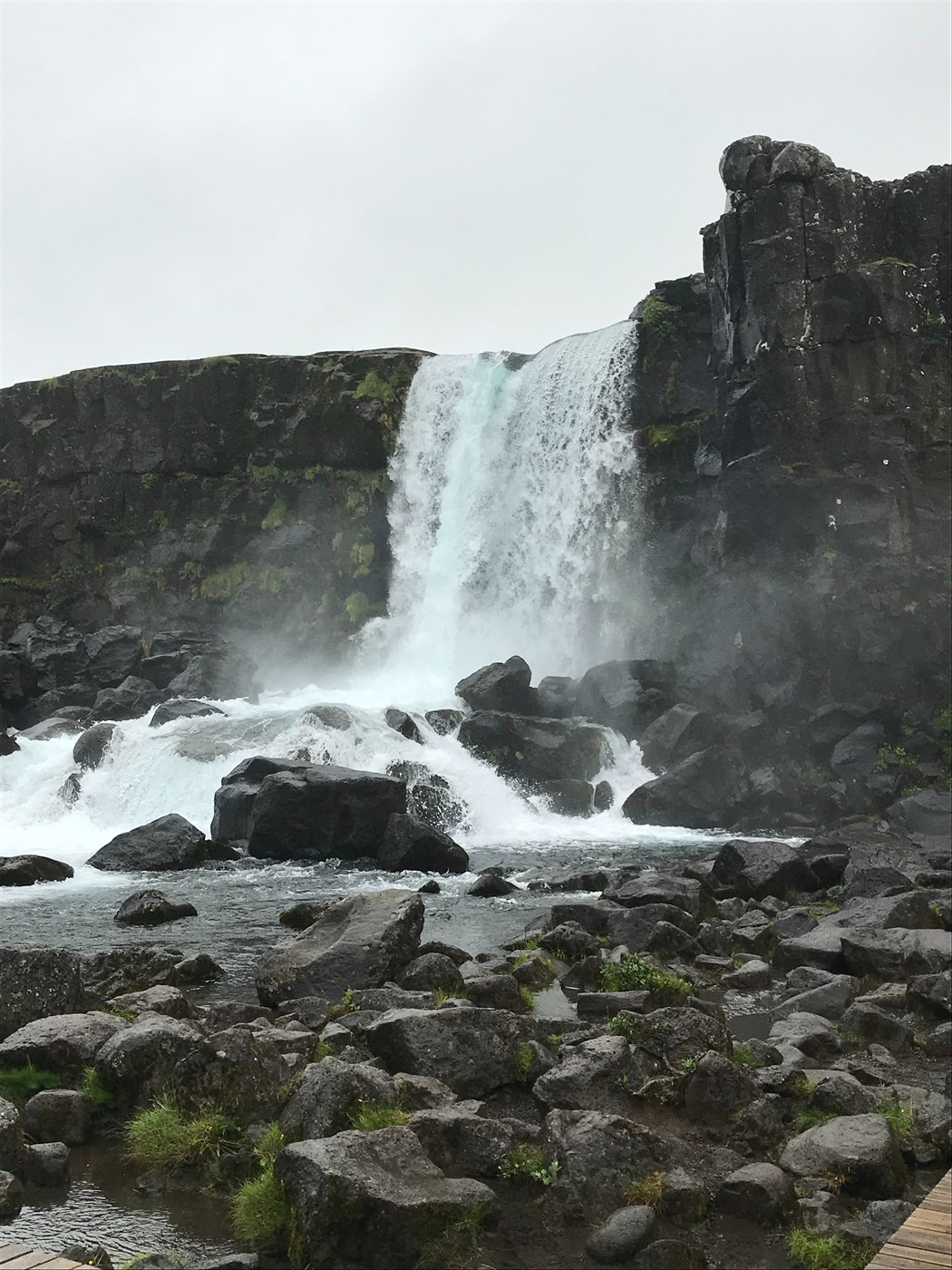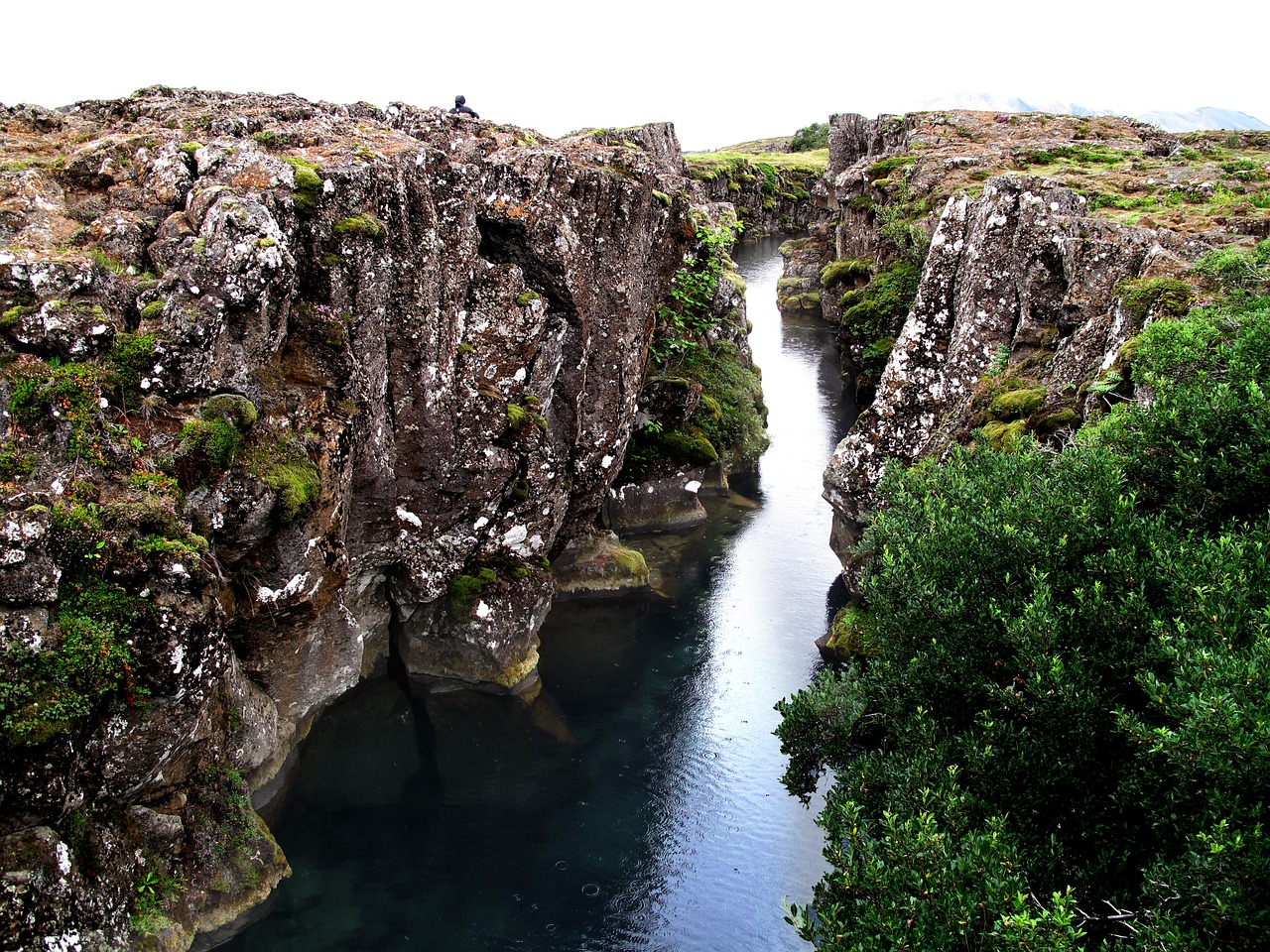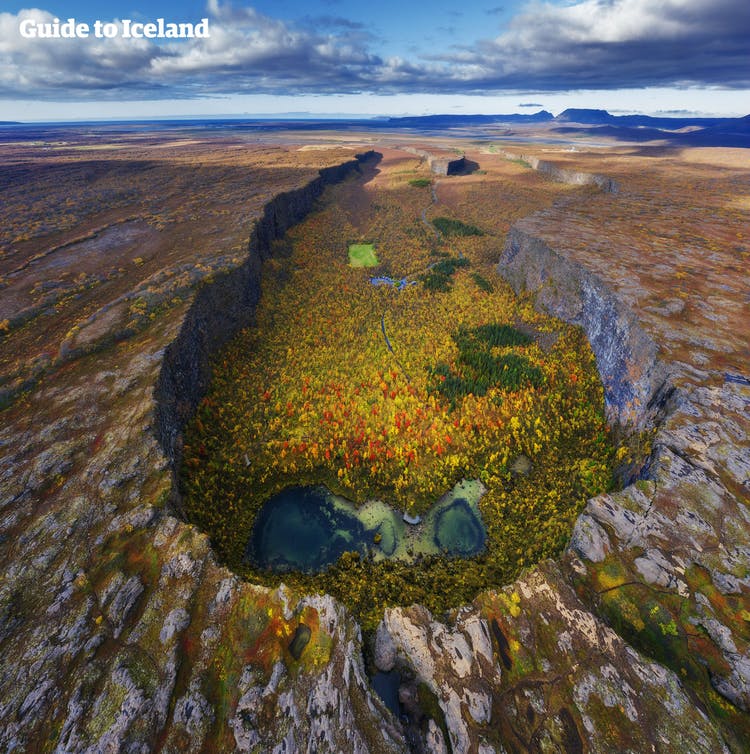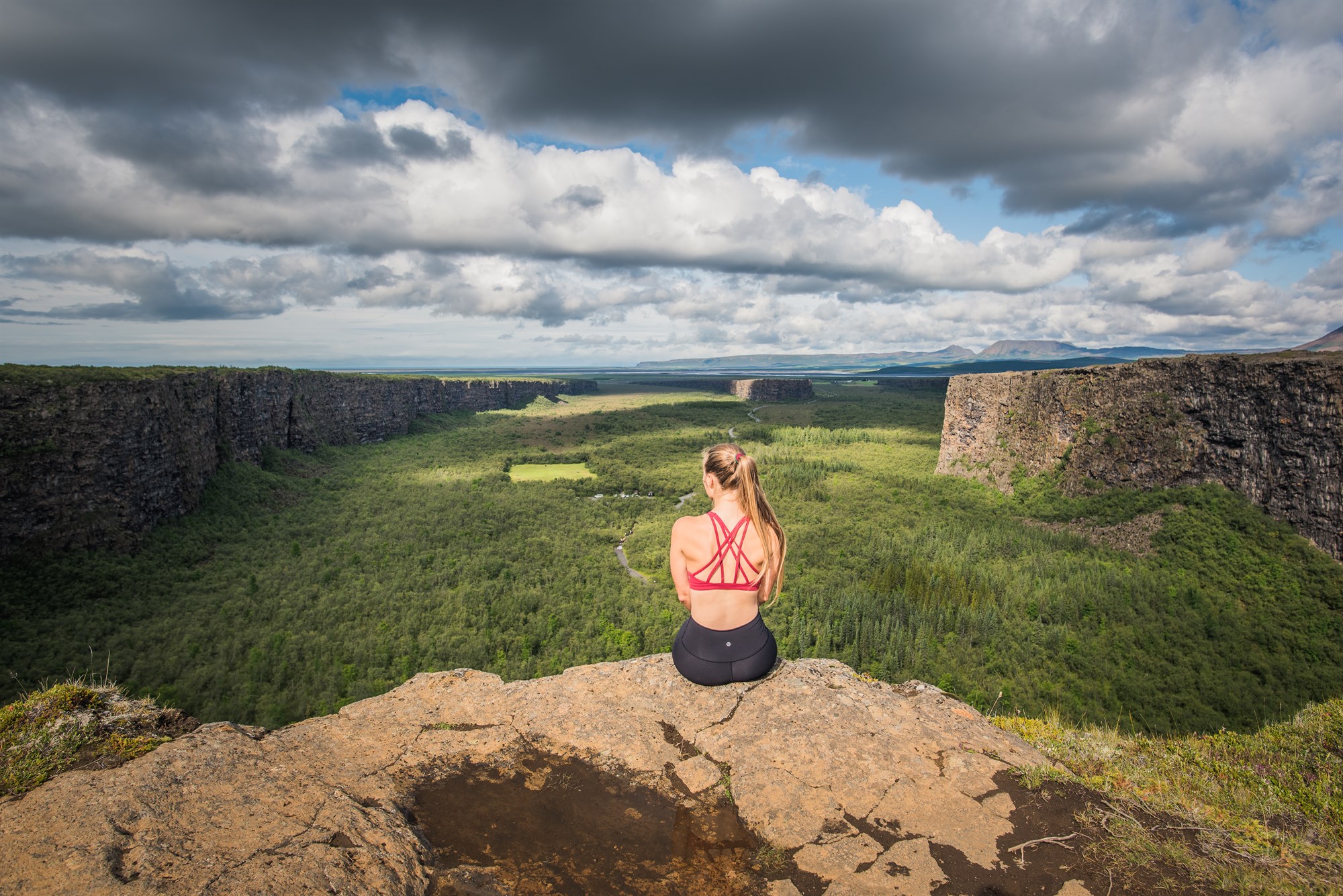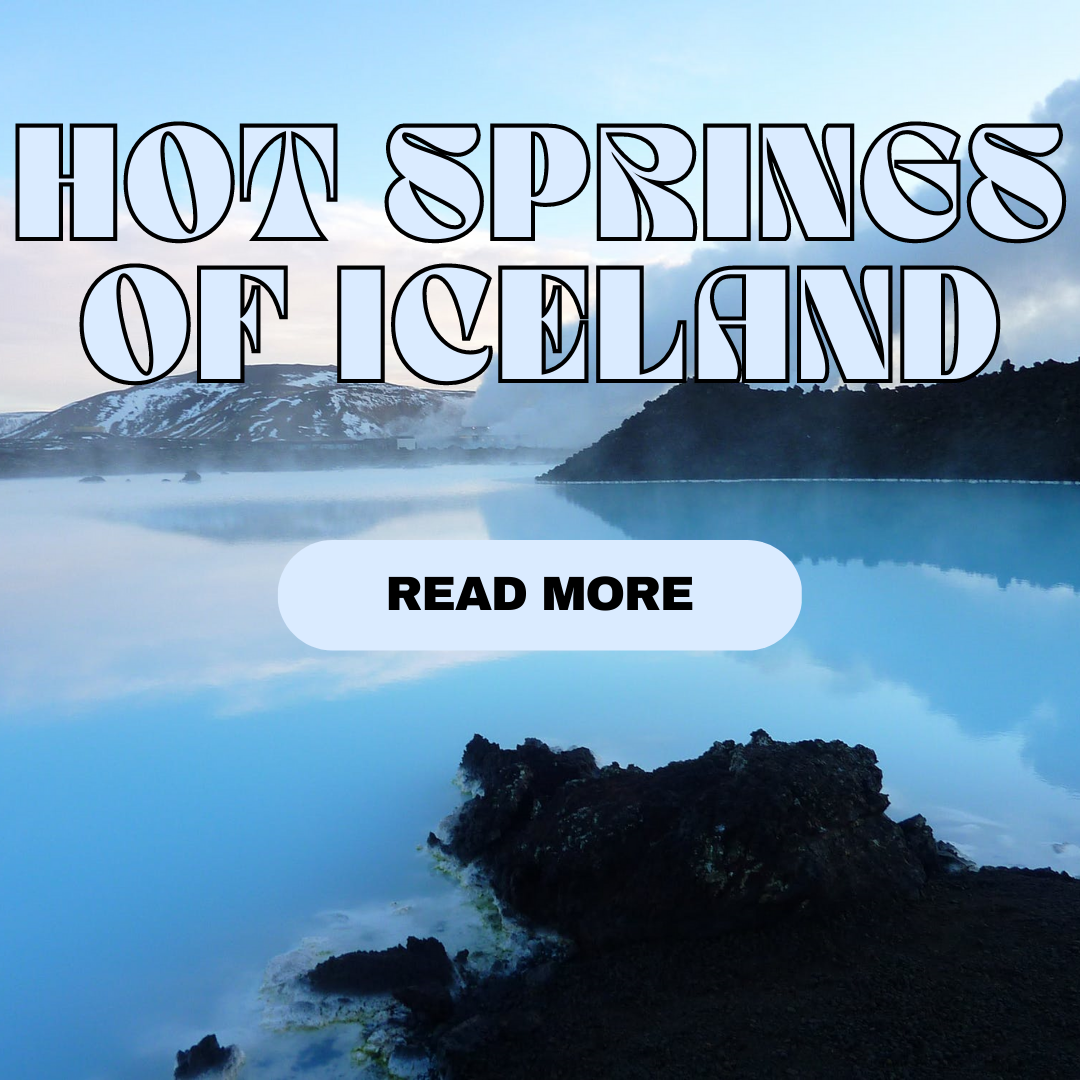Hiking in Iceland: The Ultimate Guide to the Best Trails and Treks
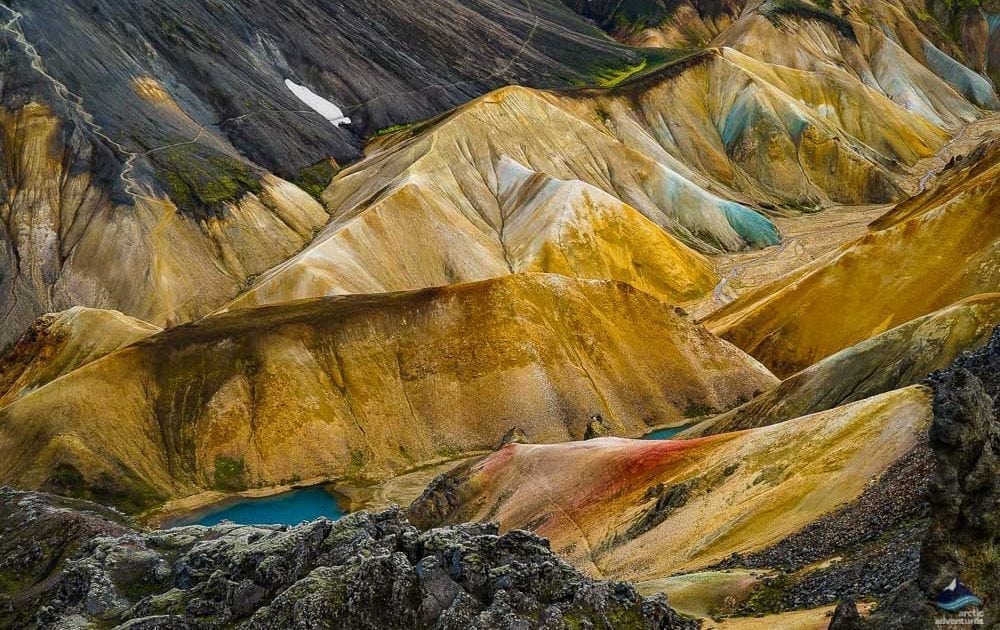
The Ultimate Guide to Hiking in Iceland
Looking for the best hikes in Iceland? You’ve come to the right place, our friend!
This guide covers everything you need to know before hitting the trails in the Land of Ice and Fire: From the best seasons and weather conditions to transportation, safety tips, must-have gear (and, of course, the most breathtaking trails).
Because, let's face it: With its untouched landscapes, dramatic scenery, and endless hiking routes, Iceland is a true paradise for outdoor enthusiasts.
Whether it’s a short walk to a hidden waterfall just off the Ring Road or a challenging trek through rugged highlands, our beautiful country really has it all!
And while the weather can be unpredictable, that hasn’t stopped thousands of adventurers from exploring Iceland’s wild beauty year after year. Even experienced hikers keep coming back for more! Because when it comes to epic landscapes, Iceland never disappoints.
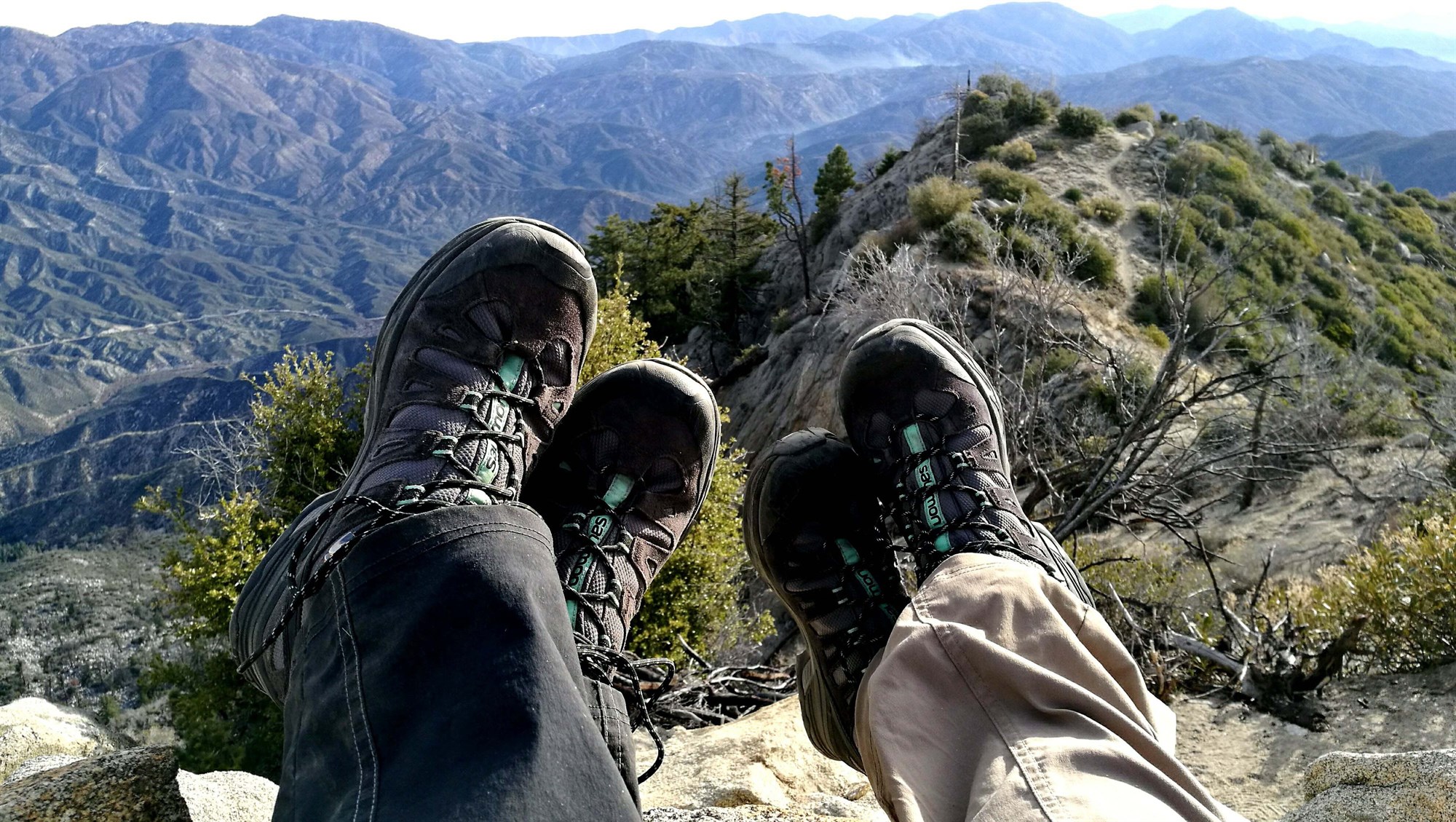
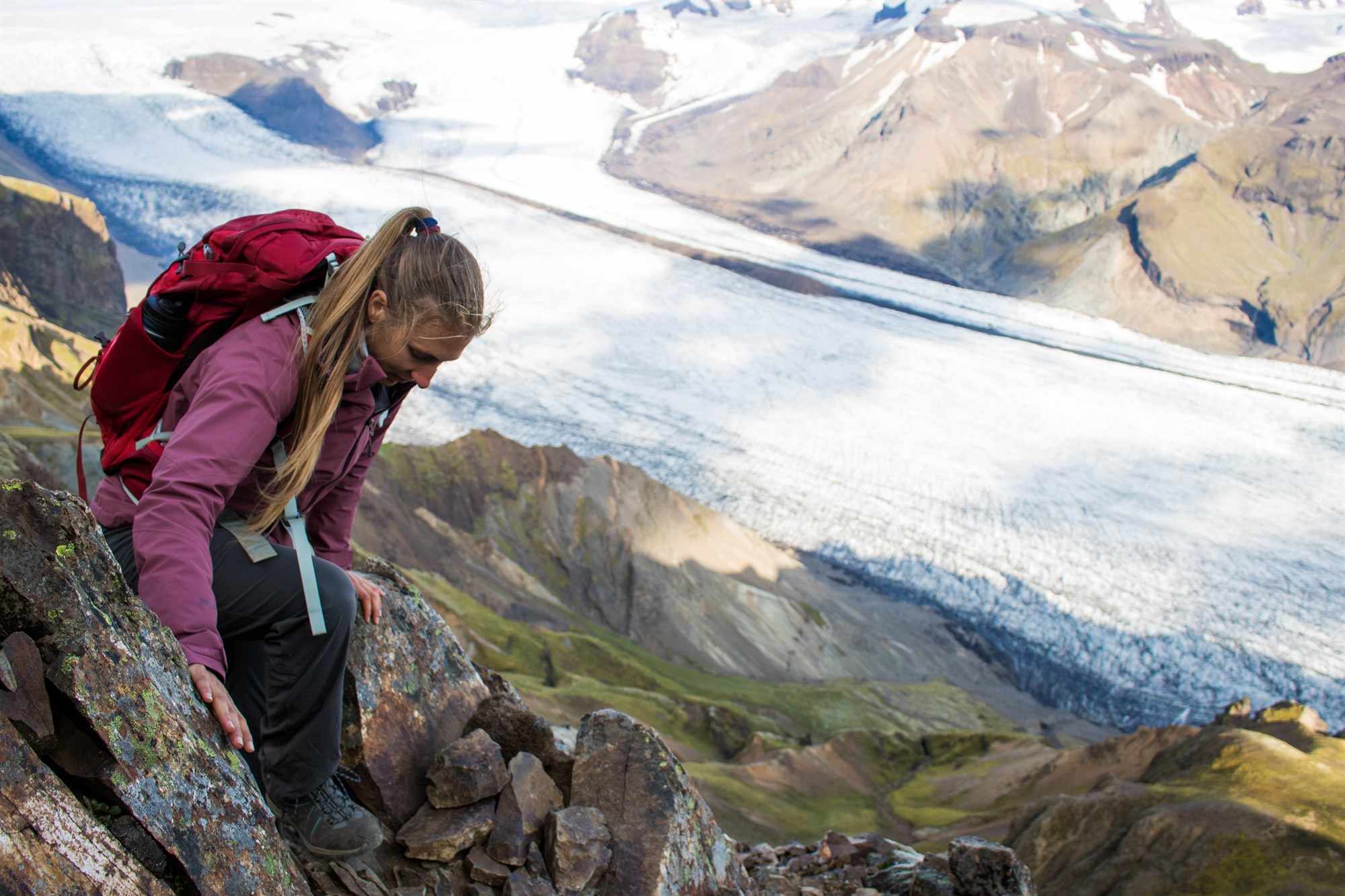
A Few Key Things to Know Before Hiking in Iceland
Iceland is an incredible destination for hiking and camping, offering a variety of trails and trekking routes that are accessible year-round. Before you lace up your boots, here are some essential tips to help you make the most of your adventure.
When Is the Best Time to Go Hiking in Iceland?
With a name like Iceland, you might expect winter hiking to be a challenge – and you’d be right. That’s why the high season for hiking is during the summer months.
It’s not just about the (somewhat) milder weather, but also the endless daylight. Thanks to the midnight sun, summer days stretch on for hours, giving you plenty of time to explore without worrying about nightfall.
The Unpredictable Icelandic Weather
If there’s one thing you need to know, it’s that Icelandic weather is anything but predictable. But don’t let that intimidate you! The key is to be prepared for sudden shifts – and that means layering up.
You could be hiking through a hailstorm one minute and basking in the sun the next. Since forecasts can change rapidly, it’s crucial to check the latest updates before heading out. Stay ahead of the weather here.
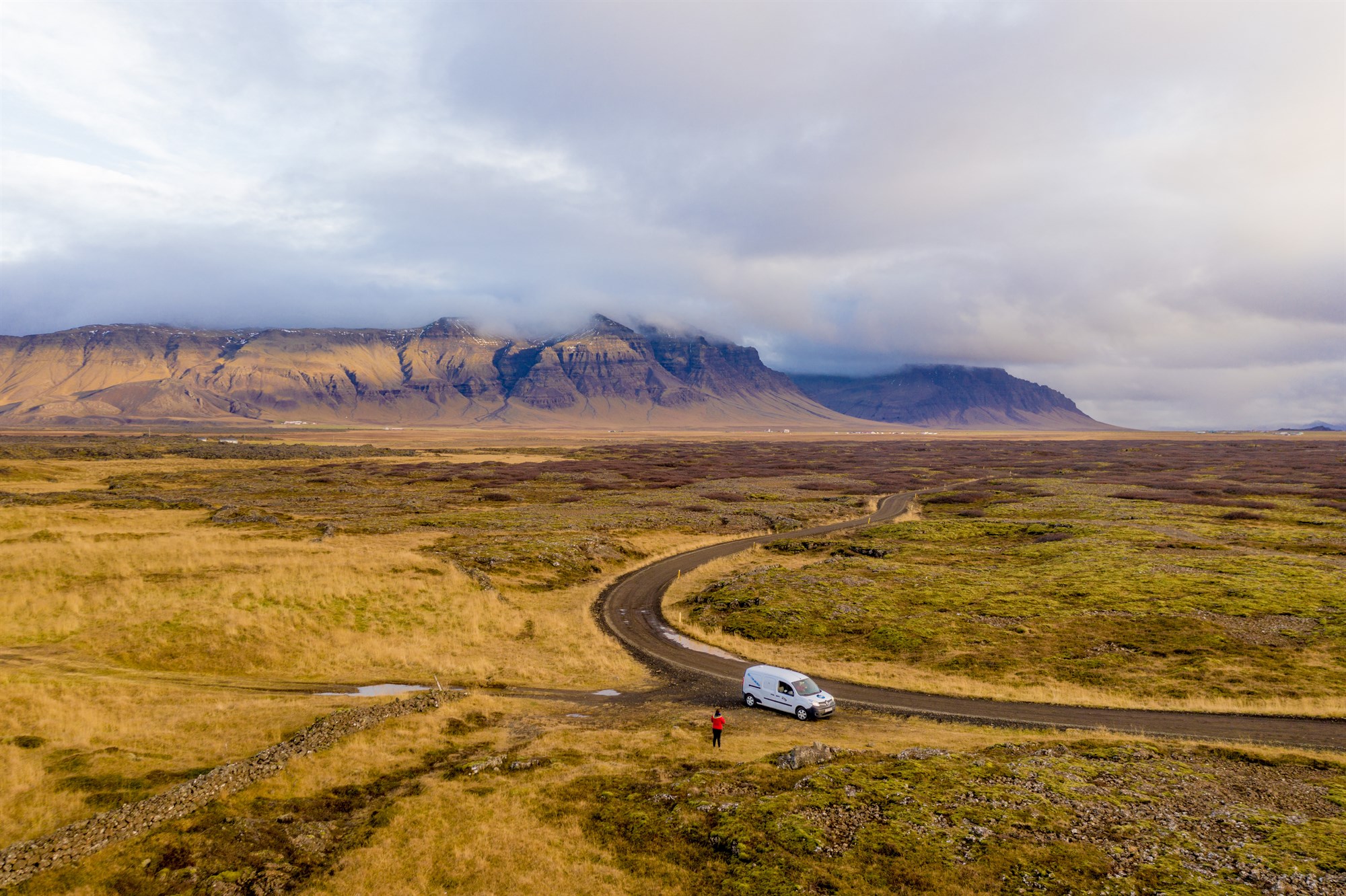
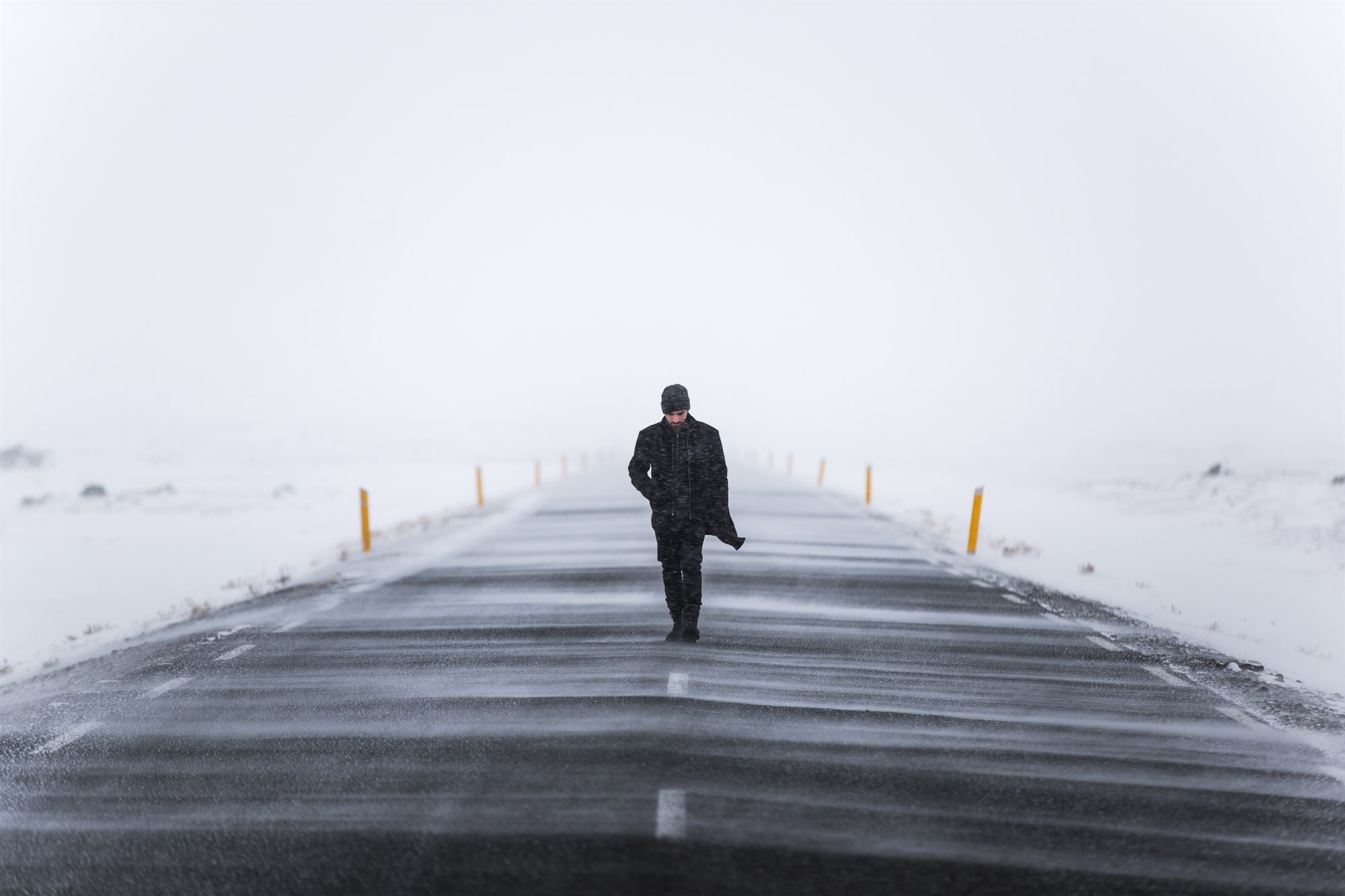
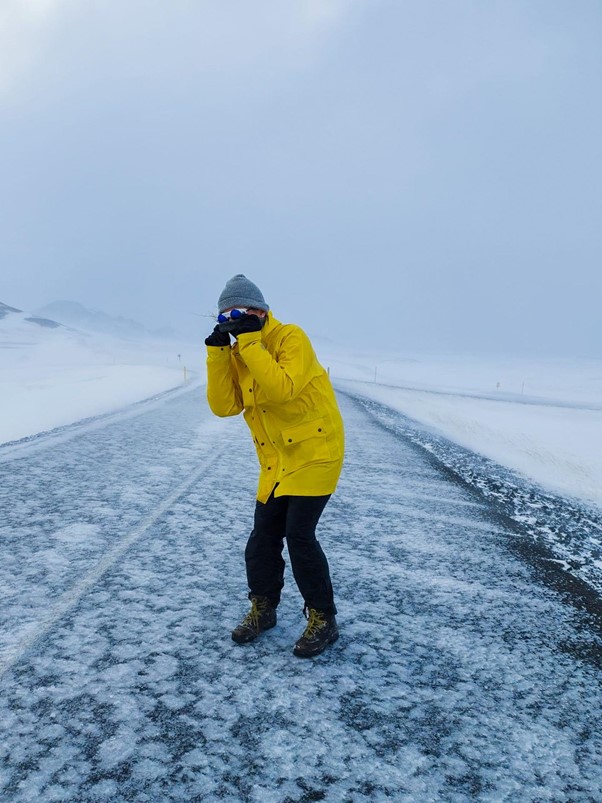
How to Get Around in Iceland for Hiking
Getting around Iceland isn’t exactly a walk in the park – especially outside the main cities, where public transportation is practically non-existent. That means you’ll almost certainly need to rent a vehicle.
As van life enthusiasts, you can probably guess what our top recommendation is, but let’s explore all the options first.
✈️ Flights and Guided Tours
Icelandair operates daily flights from Reykjavík’s domestic airport (not to be confused with Keflavík International Airport!) to various towns across the country. Many of these destinations serve as gateways to some of Iceland’s best hiking trails, often with guided tours available. We’ll dive deeper into this option later – stick around for some handy tips!
🚗 Renting a Car
If you want total freedom to explore at your own pace, renting a car is a solid option. Rental agencies are available at both Keflavík International Airport and Reykjavík, making it easy to pick up a vehicle and hit the road.
The advantage? You can drive yourself to most trailheads without relying on tours. The downside? You’ll need to book hotels or guesthouses in advance – something that can be both expensive and tricky, given the limited availability of accommodations in rural areas.
🚙 The Ultimate Solution: Campervan Rental
Now, if you really want to experience Iceland like a pro, a campervan is the way to go. It’s hands down the best way to explore the country on a budget. Instead of shelling out for pricey hotels, you can stay at designated campsites for as little as 12 EUR per night – many of which don’t even require reservations.
That means total freedom to travel at your own pace, without stressing over rigid plans.
So what are you waiting for? Book your campervan now with the biggest (and, let’s be honest, coolest) rental company in Iceland!
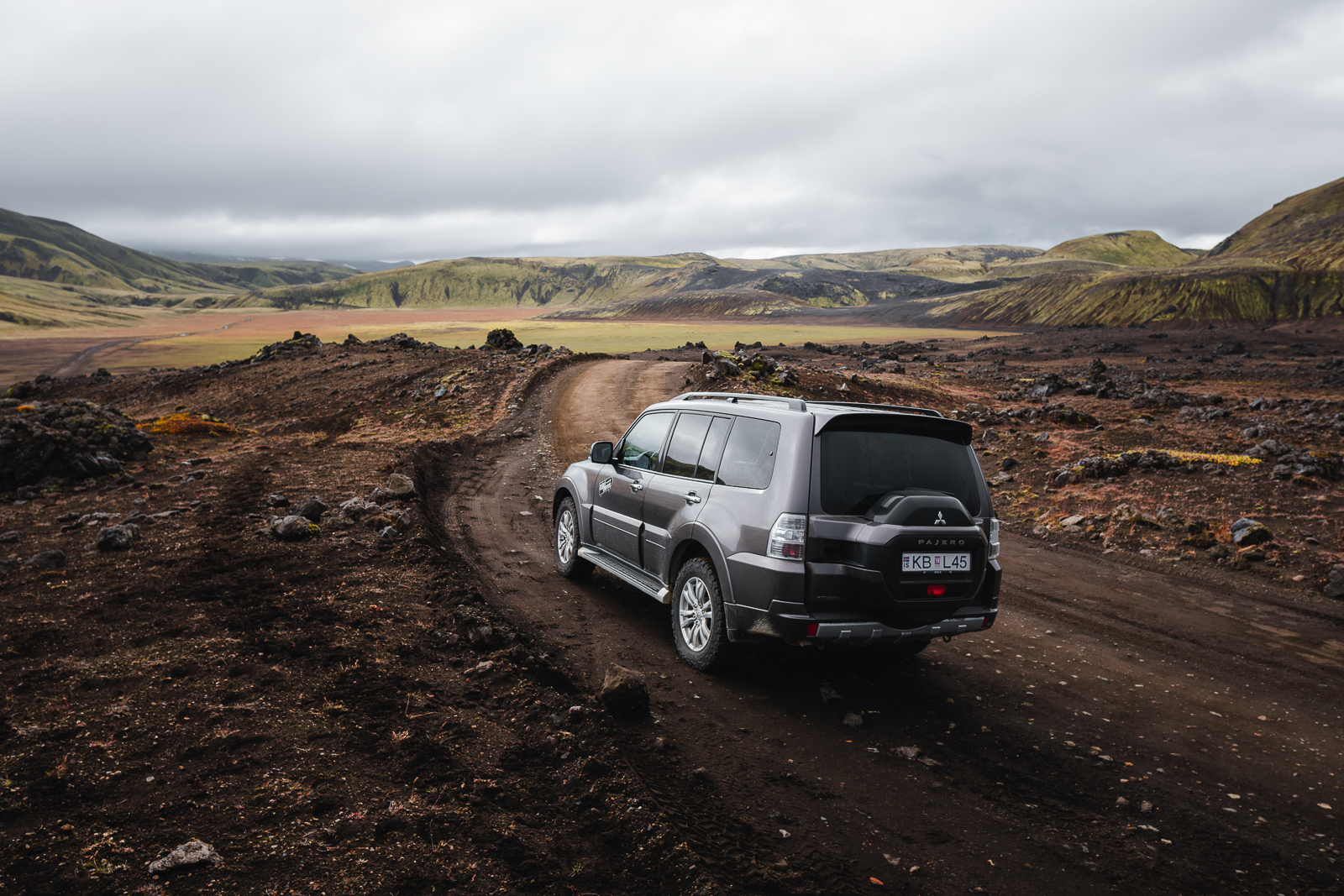
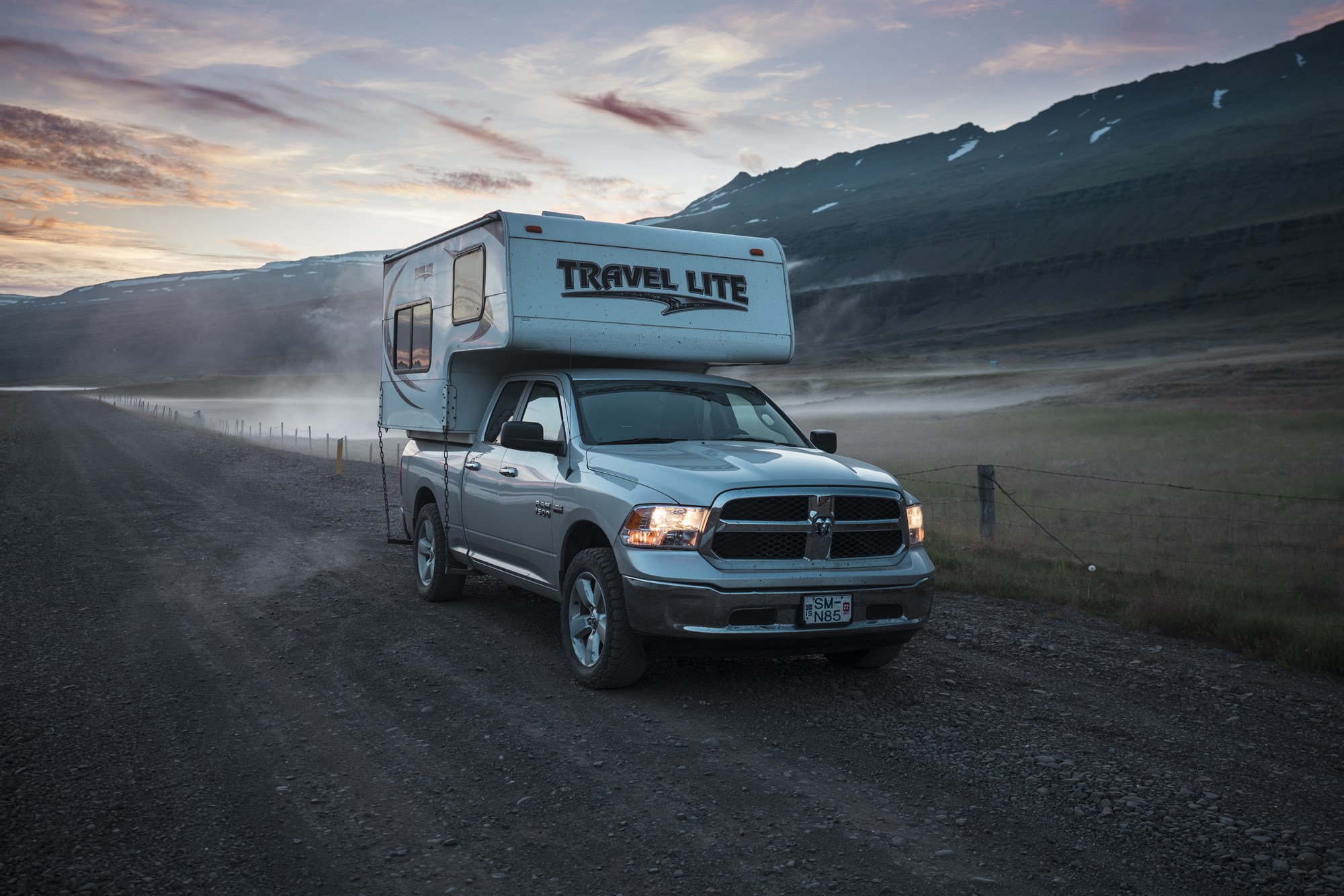
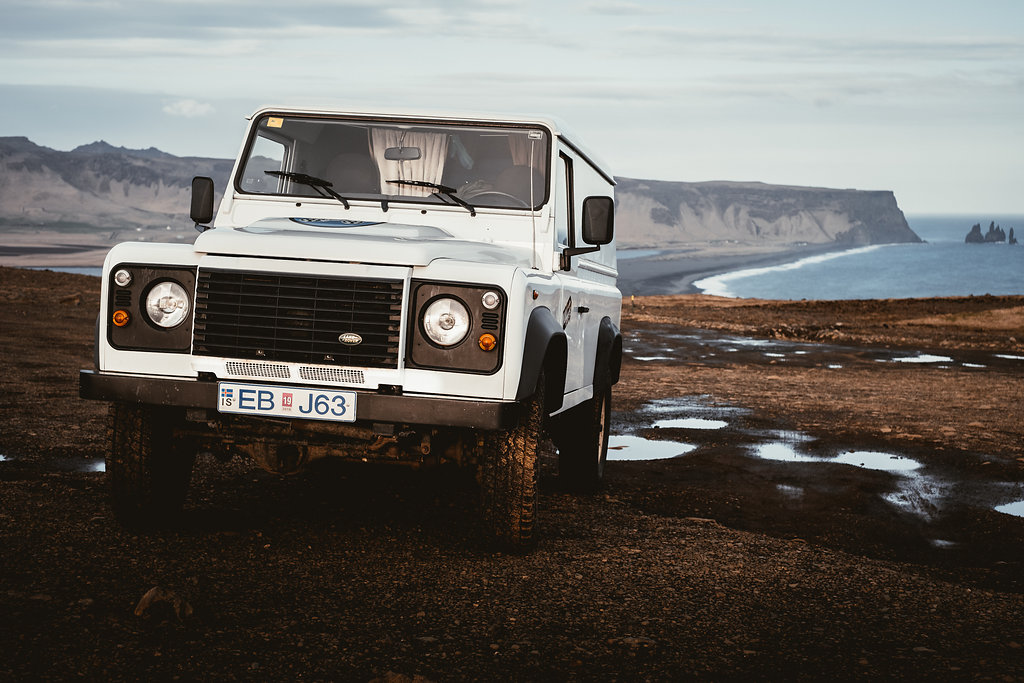
F.A.Q.
Campervan or Tent? 🏕️
One of the most common questions from first-time campers in Iceland is whether to go for a campervan or a tent. The good news? The choice is yours. But if comfort and convenience matter to you – and they definitely should in a place like Iceland – a campervan is the way to go.
With a campervan, you can move freely between different camping spots without relying on external transportation. Plus, you’ll have a warm, dry place to sleep after a long day of trekking. A tent, on the other hand, limits your flexibility and – let’s be honest – it doesn’t come with a heating system. And in Iceland, that’s something to think twice about.
Can I Camp on Hiking Trails? 🥾
Not anymore. In recent years, Iceland has introduced stricter regulations to protect its fragile landscapes. Wild camping is no longer allowed, meaning you can only pitch your tent in designated campsites. Plan accordingly to avoid fines and, more importantly, to help preserve Iceland’s natural beauty.
Safety Rules
Iceland is full of remote, isolated areas. While this is part of what makes it such an incredible place to hike, it also means that help can be far away if something goes wrong.
Your new best friend? SafeTravel.is. This site provides real-time updates on weather conditions and potential hazards. You can even submit your travel plan to get an expert opinion on whether your route is safe! Amazing, isn't it?
For weather warnings, make sure to follow our Instagram and Facebook pages, where we keep our community updated on any significant changes to ensure a safe adventure in Iceland.
A few golden rules to stay safe:
- Always tell someone your plans, including where you’re going and when you expect to return.
- Stay informed: Check the weather and road conditions before heading out.
- Do your research: Iceland’s terrain is unique, so make sure you’re fully prepared and pack the right gear.
The Roads in Iceland
Iceland’s roads can be as unpredictable as its weather, which is why understanding the basics before driving is essential.
Paved Roads vs. Gravel Roads
There are two main types of roads in Iceland:
- Paved roads: Safe for all vehicles and regularly maintained, even in winter.
- Gravel roads: Rougher and more challenging to drive on. Some can be accessed with a 2WD, while others require a 4x4.
F-Roads: What You Need to Know
Some gravel roads are classified as F-roads – remote, unpaved routes that lead deep into the Highlands. These roads are only accessible with a 4x4, and in some cases, you’ll need an extreme off-road vehicle with high clearance.
A key thing to remember:
- A regular 4x4 can usually cross rivers no higher than your knees.
- No vehicle should attempt to cross a river that reaches the chassis – the risk of getting stuck is too high.
Before setting off, check which roads lead to the trails you want to hike so you can choose the right rental vehicle. For real-time road conditions, visit road.is.
What to Pack for a Hiking Trip in Iceland?
They say a picture is worth a thousand words – but when it comes to packing for a hike in Iceland, a solid checklist is even better.
Here’s our KuKu-approved packing list to keep you safe, warm, and ready for adventure on the trails.
Best Hikes and Trails in Iceland
To make things easier, we’ve divided this ultimate list of Iceland’s best hikes into two categories:
- Day hikes covering a range of difficulty levels, from easy walks to more challenging trails.
- Multi-day hikes for the true hiking fanatics looking for an extended adventure.
🗺️ Map of the Best Hikes
Best Day Hikes in Iceland
1. Landmannalaugar Loop
- Duration: 5–6 hours
- Difficulty: Moderate
- Distance: 10 km
- Ascent: 610 m
The Landmannalaugar Loop is one of Iceland’s most iconic hikes, taking you through a landscape straight out of a fantasy novel. The route covers Mt. Bláhnúkúr and Mt. Brennisteinsalda, the two most famous peaks in the area.
For the best experience, we recommend starting with Mt. Bláhnúkúr – this way, you tackle the steepest ascent right at the beginning, leaving the rest of the hike more enjoyable.
Landmannalaugar is known for its otherworldly scenery, with vibrant rhyolite mountains, steaming geothermal vents, and winding lava fields.
While this hike can be completed in a day, we highly recommend spending a night at the Landmannalaugar campsite to soak in the legendary natural hot springs – the perfect way to relax after a day on the trails.
2. Fagradalsfjall Volcano
- Duration: 8 hours
- Difficulty: Medium
- Distance: 20 km
For four summers in a row, Iceland has witnessed volcanic eruptions in the same region – the Reykjanes Peninsula, the most geologically active area in the country. Since the first eruption in 2021, authorities have established designated hiking trails to allow visitors to safely access the eruption sites.
However, as the fissure moves north each year, the hike has progressively lengthened. Currently, the trail begins from the parking areas on Road 427, east of Grindavík. If you’re aiming for the most recent eruption site, you’ll need to follow Trail E, which is regularly updated on SafeTravel.is. We highly recommend downloading their latest map and following their safety guidelines.
⚠️ Important Safety Tips
- The full hike is 18 km round trip and can take up to 8 hours, so be sure to plan accordingly before setting out.
- Check the weather forecast in advance, as volcanic gas pollution can be extremely dangerous. You’ll want to make sure the wind is not blowing towards the trail – you can monitor gas levels and wind direction here.
- If you’re hiking at night, bring a flashlight or headlamp – the trail is completely unlit and can be tricky to navigate in the dark.
Bonus tip: If you return late at night, you can park your campervan at Grindavík’s campsite, which is conveniently close to the trailhead.
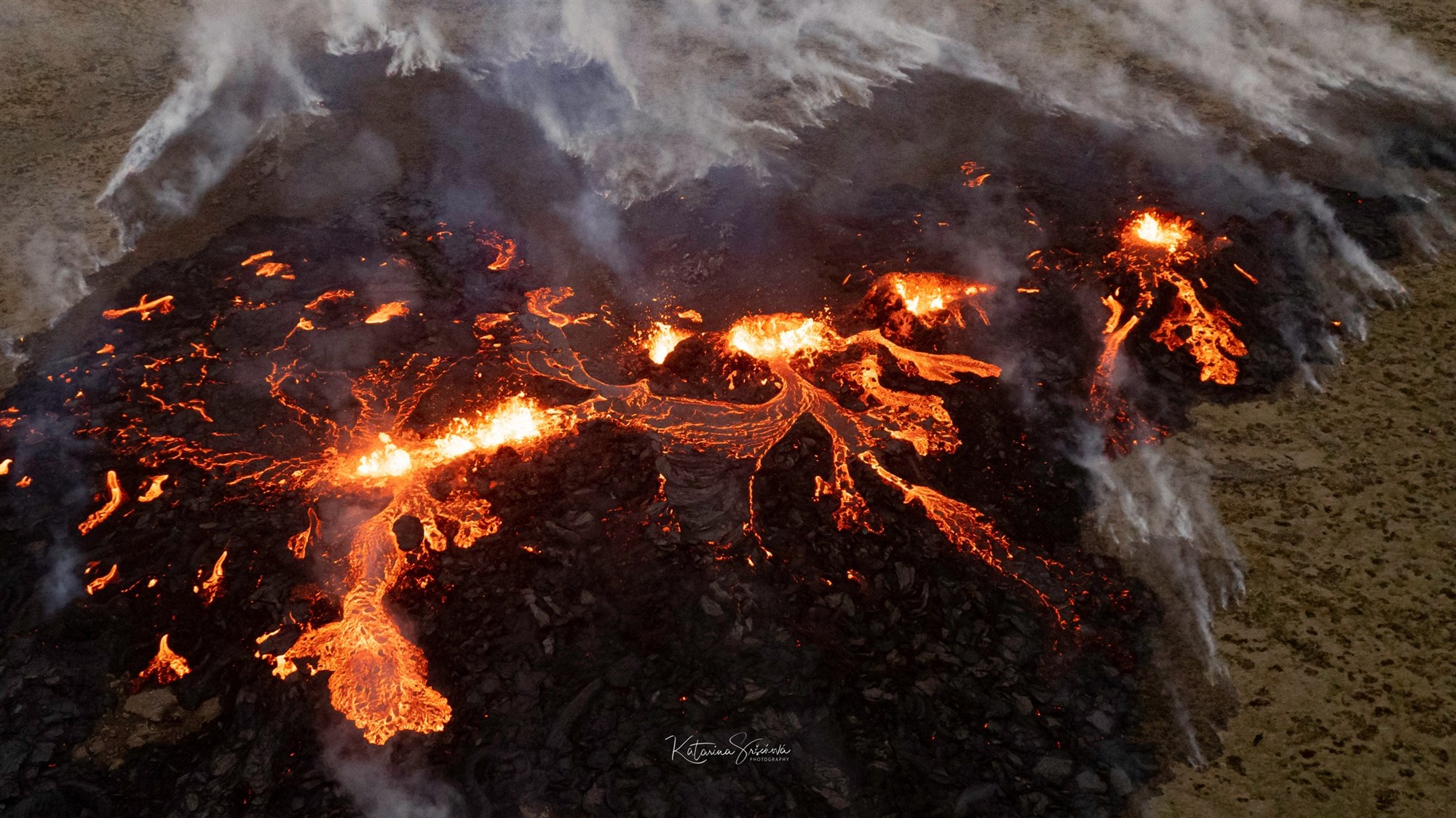
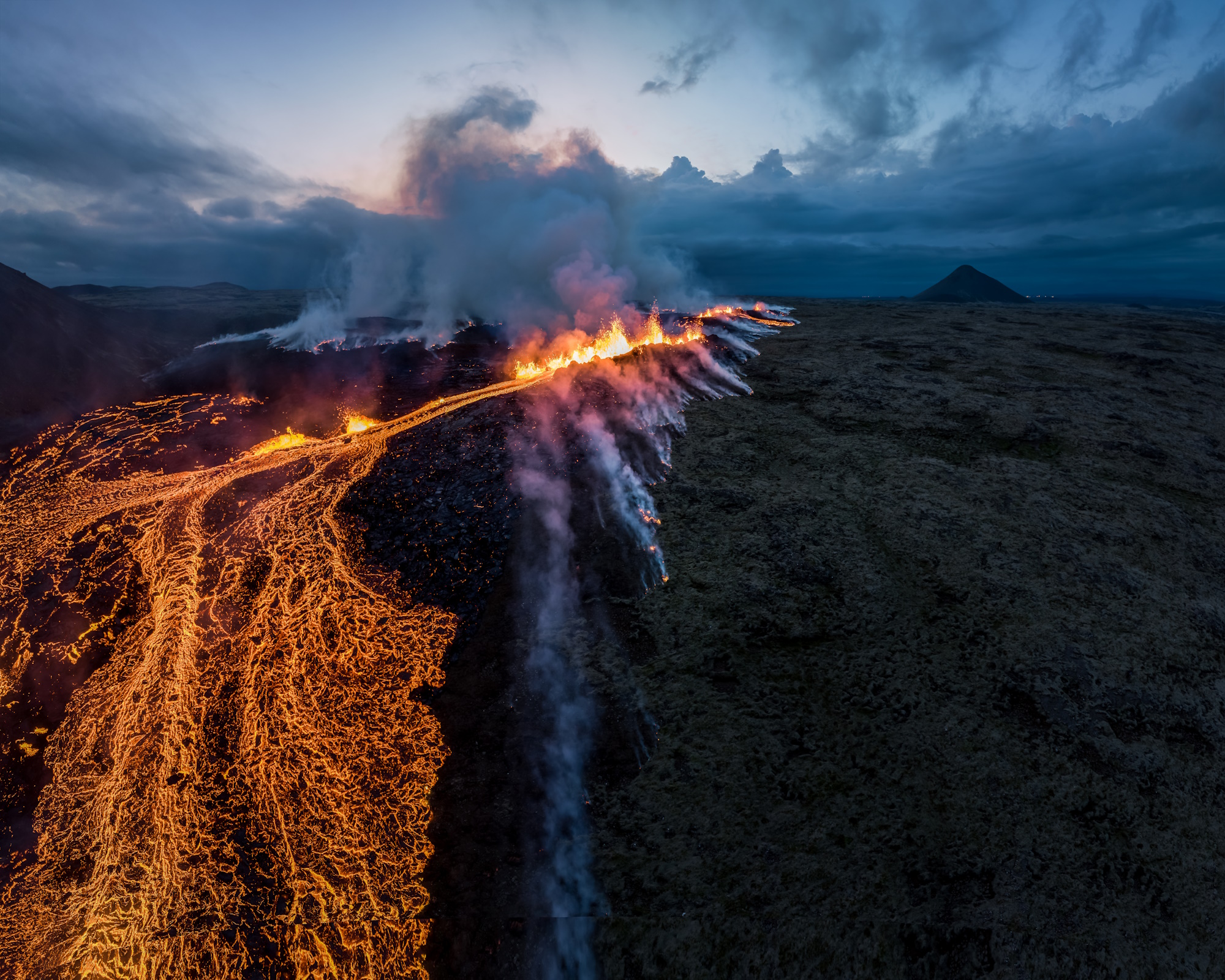
3. Kerlingarfjöll
- Duration: 8 hours
- Difficulty: Medium
- Distance: 24 km
- Ascent: 560 m
The Kerlingarfjöll mountains are a true hiker’s paradise, offering some of the most surreal landscapes in Iceland.
Nestled deep in the Highlands, this remote area is only accessible via 4x4 – the mountain roads leading here are classified as F-roads and remain closed until the snow has fully cleared, usually around June.
Even when the roads open, patches of snow can linger on the trails and mountaintops well into July, making August and early September the best time to visit for hiking and camping.
The main campground at the base of the mountains serves as a perfect starting point, with multiple trails leading into this geothermal wonderland.
Expect to be mesmerized by steaming vents, vibrant earth tones, and dramatic ridges, all blending together in a truly breathtaking setting.
4. Þingvellir / Öxarárfoss Waterfall
- Duration: 2 hours
- Difficulty: Easy
- Distance: 5 km
- Ascent: 232 m
If you’re looking for a short and easy hike, this one’s for you! Þingvellir National Park is famous for its walk between the tectonic plates, offering a unique and geologically stunning experience just a short drive from Reykjavík.
The trail is well-marked and safe, making it an ideal choice for beginners or anyone wanting a scenic yet relaxed hike. And the best part? Along the way, you’ll get to admire Öxarárfoss, a beautiful waterfall that adds a magical touch to this already incredible walk.
5. Svartifoss
- Duration: 2 hours
- Difficulty: Easy
- Distance: 5 km
- Ascent: 140 m
Svartifoss is one of Iceland’s most unique waterfalls, known for its striking basalt column formations that resemble something straight out of a fantasy world.
The hike to Svartifoss is short, relatively easy, and features only a mild ascent, making it accessible to all levels of hikers.
Along the way, you’ll pass several smaller waterfalls, which provide the perfect excuse to pause, take in the scenery, and catch your breath if needed.
For the best experience, we highly recommend spending a night at Skaftafell Camping in Vatnajökull National Park. This campsite is surrounded by snow-capped mountains and serves as a great base for exploring additional trails – ranging from beginner-friendly walks to more advanced hikes.
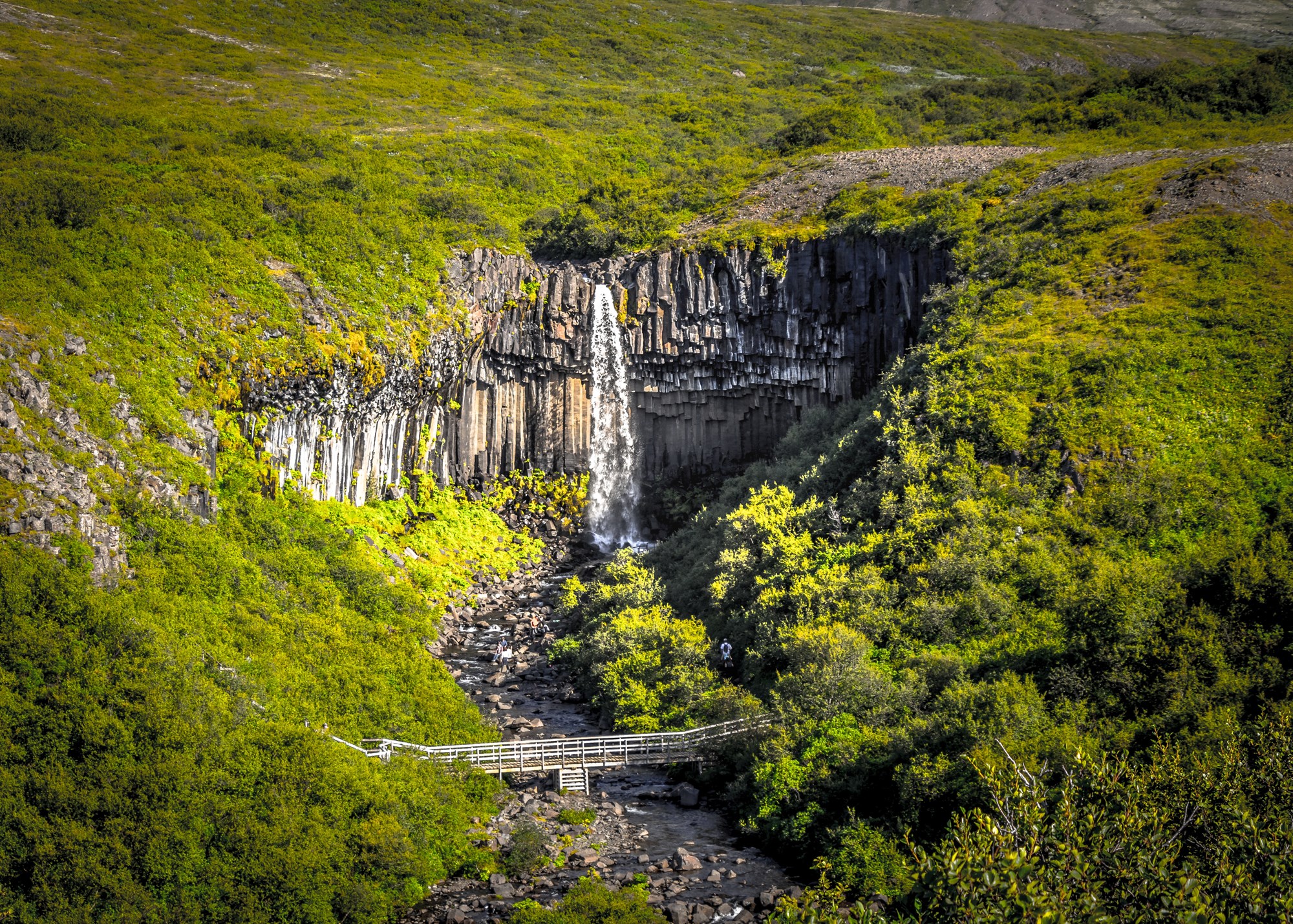
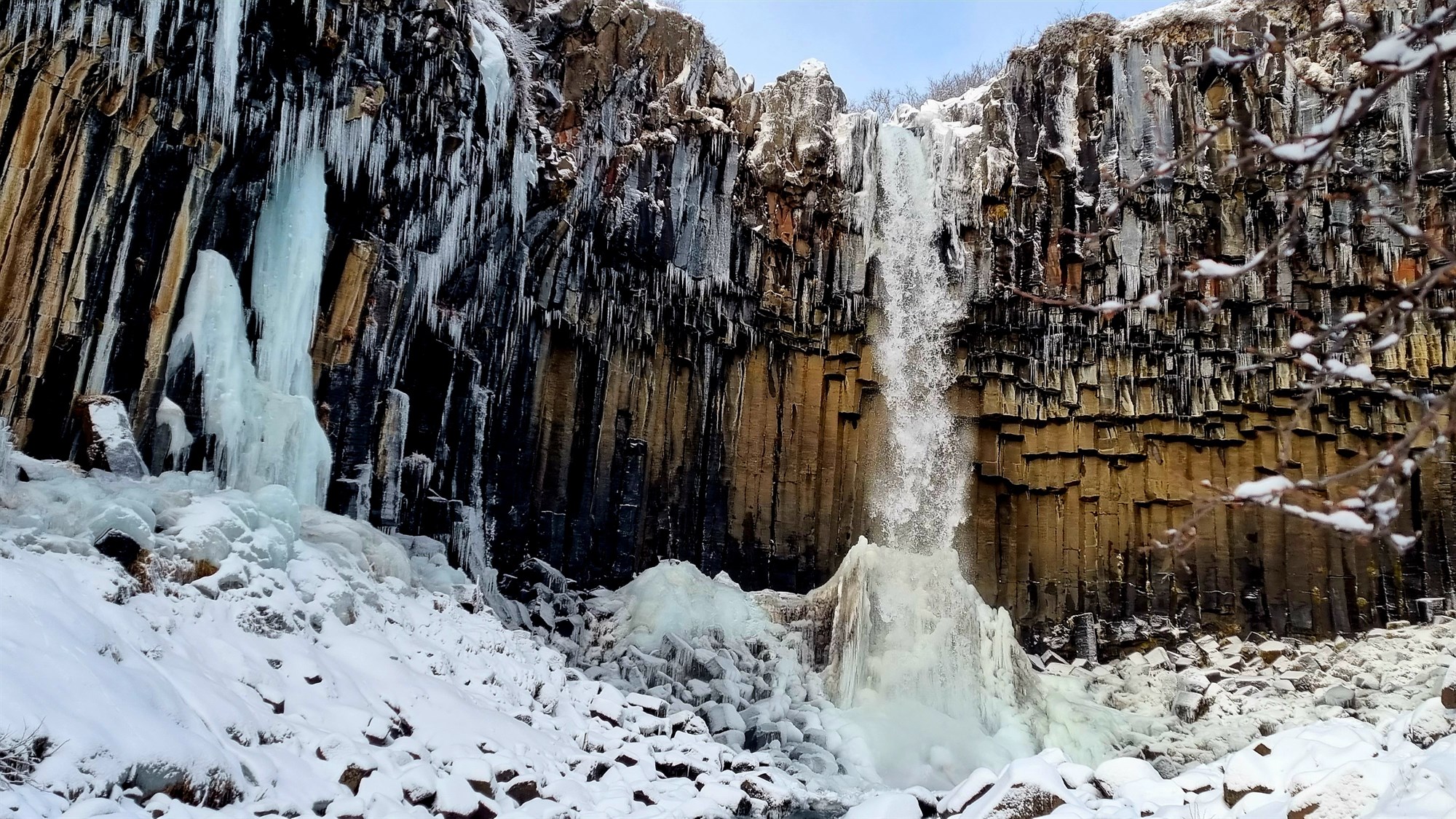
6. Hengifoss
- Duration: 3–4 hours
- Difficulty: Easy to Medium
- Distance: 5 km
- Ascent: 400 m
Hengifoss is one of Iceland’s most famous waterfalls – but as with most breathtaking sights, getting there requires a bit of effort. The hike may be short (1–2 hours one way), but it’s a workout, thanks to the steep slopes and a 300 m elevation gain.
What to Expect on the Trail
- Along the way, you’ll pass smaller waterfalls that flow from Hengifoss, offering stunning viewpoints and natural rest stops.
- River crossings are part of the adventure, so be sure to wear waterproof hiking boots to keep your feet dry.
- You’ll encounter sheep fences that you’ll need to pass through – and yes, there’s a good chance you’ll see some wandering sheep along the trail.
- Wind warning! On blustery days, the final stretch near the waterfall can be challenging. Hold onto the rope along the trail to keep steady as you approach the falls.
A bit of effort, but absolutely worth it for the dramatic scenery and that unforgettable view of Hengifoss!
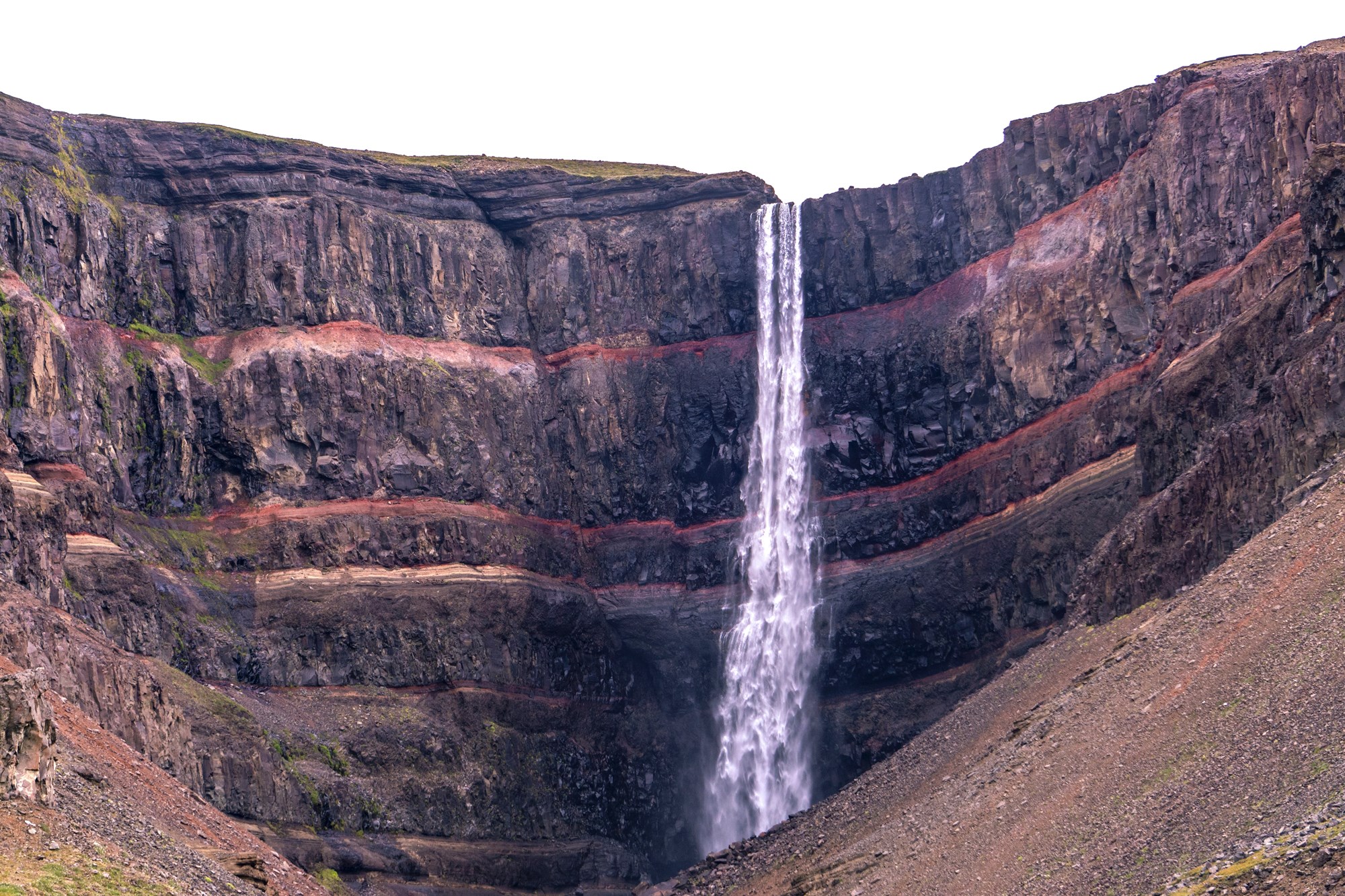
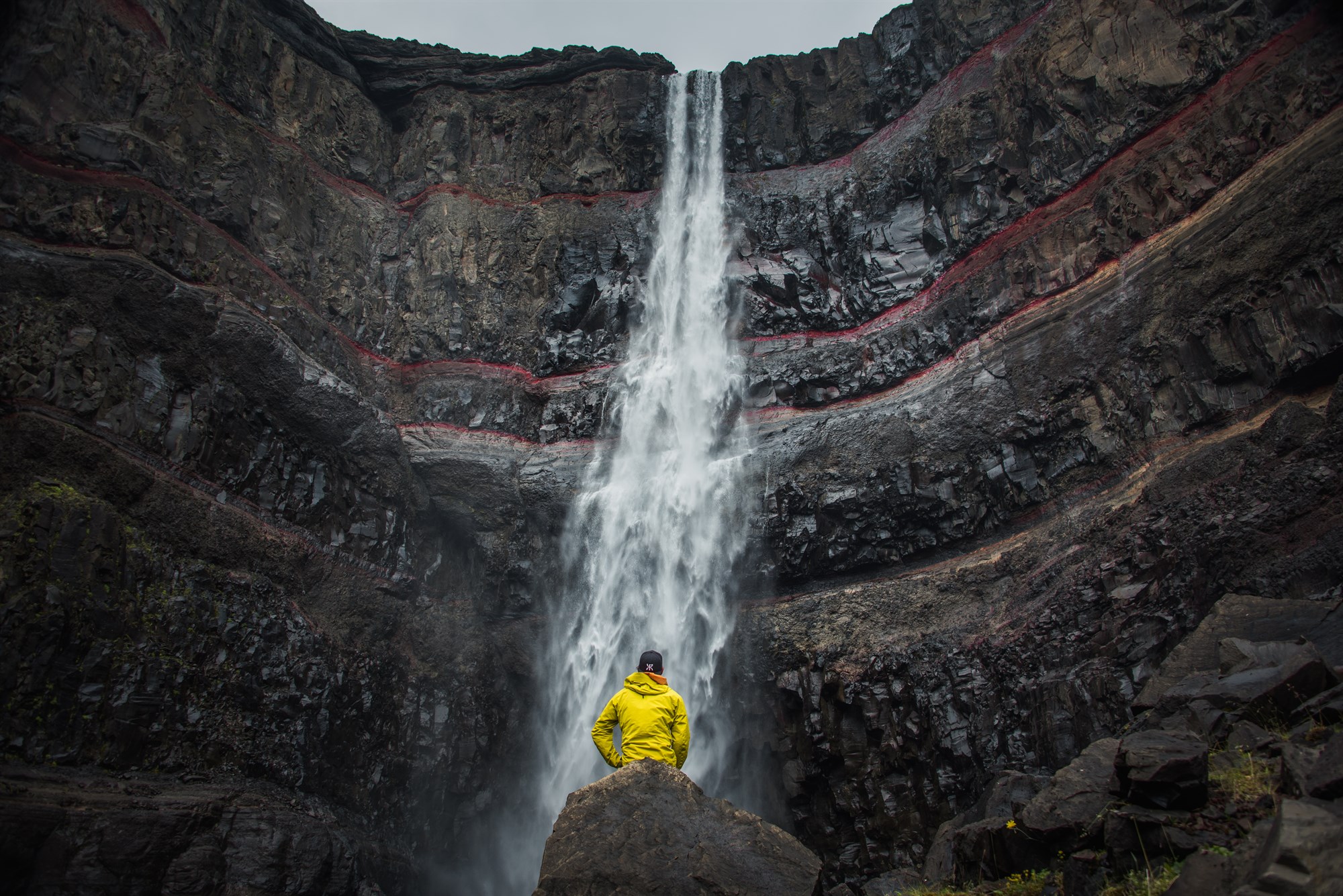
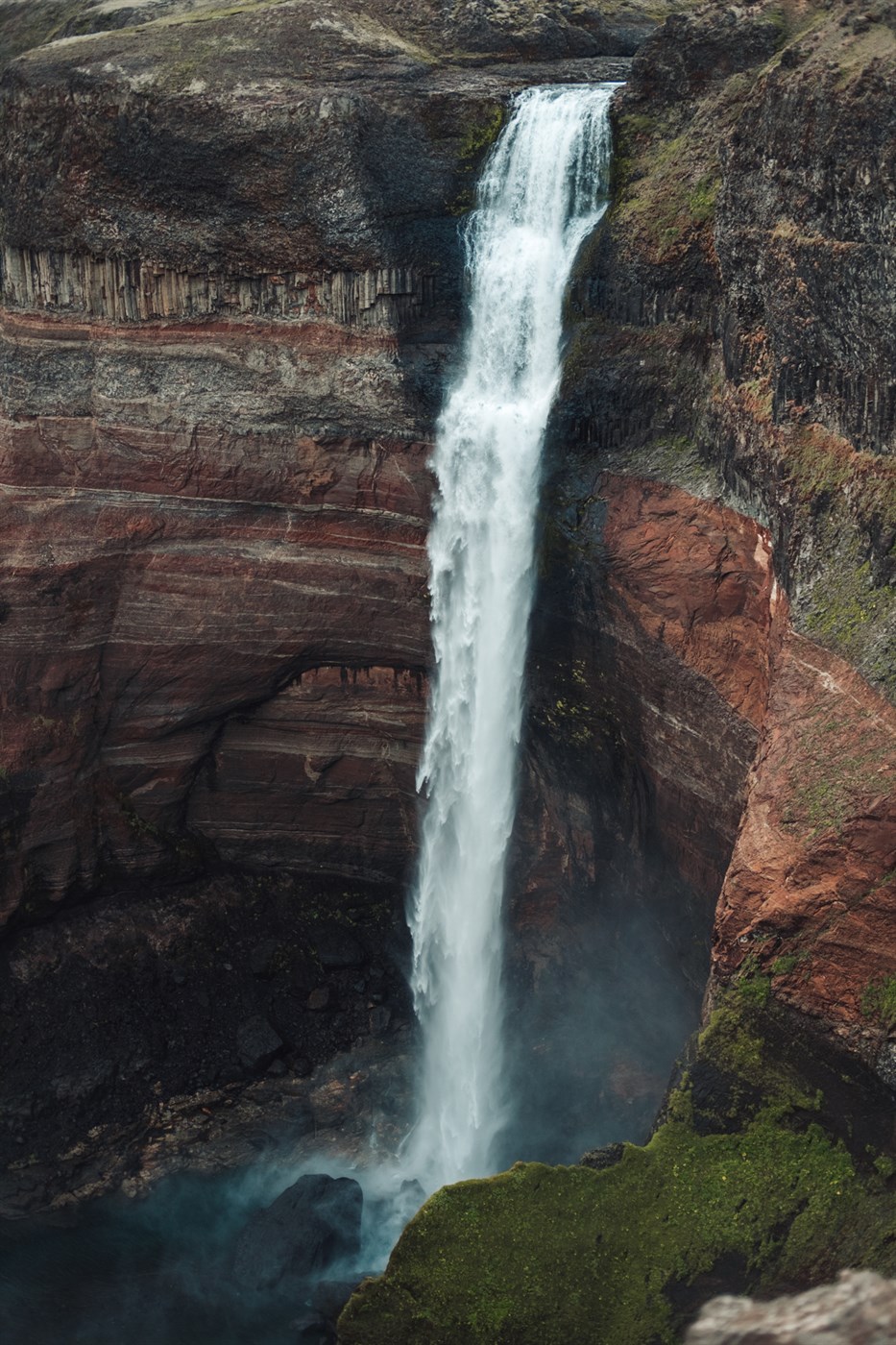
7. Reykjadalur Hot River
- Duration: 3 hours + bathing time
- Difficulty: Easy
- Distance: 12 km
- Ascent: 347 m
Located near Hveragerði, about 45 km from Reykjavík, Reykjadalur Valley – also known as the "valley of steam" – is home to bubbling mud pools, hot springs, and a naturally heated geothermal river where you can take a relaxing soak.
What to Expect on the Hike
The trail to the hot river is around 3 km one way, making for an easy and scenic hike. Along the way, you’ll pass through lush green valleys, steaming vents, and colorful patches of geothermal activity. Expect a mix of bright green moss, deep blue rivers, and striking gray-blue mud pools – a true feast for the eyes.
⚠️ Safety First: Stay on the marked path! Many of the hot springs in the area are far too hot to bathe in, and hidden mud pools can be dangerously scalding.
Bathing in the Hot River
The bathing area is marked by a wooden deck, making it easy to access the safe parts of the river. If the water feels too hot, simply move further downstream, where cooler currents mix in.
For those planning to stay overnight, the closest campsite is Reykjamörk Camping in Hveragerði, conveniently located near town services.
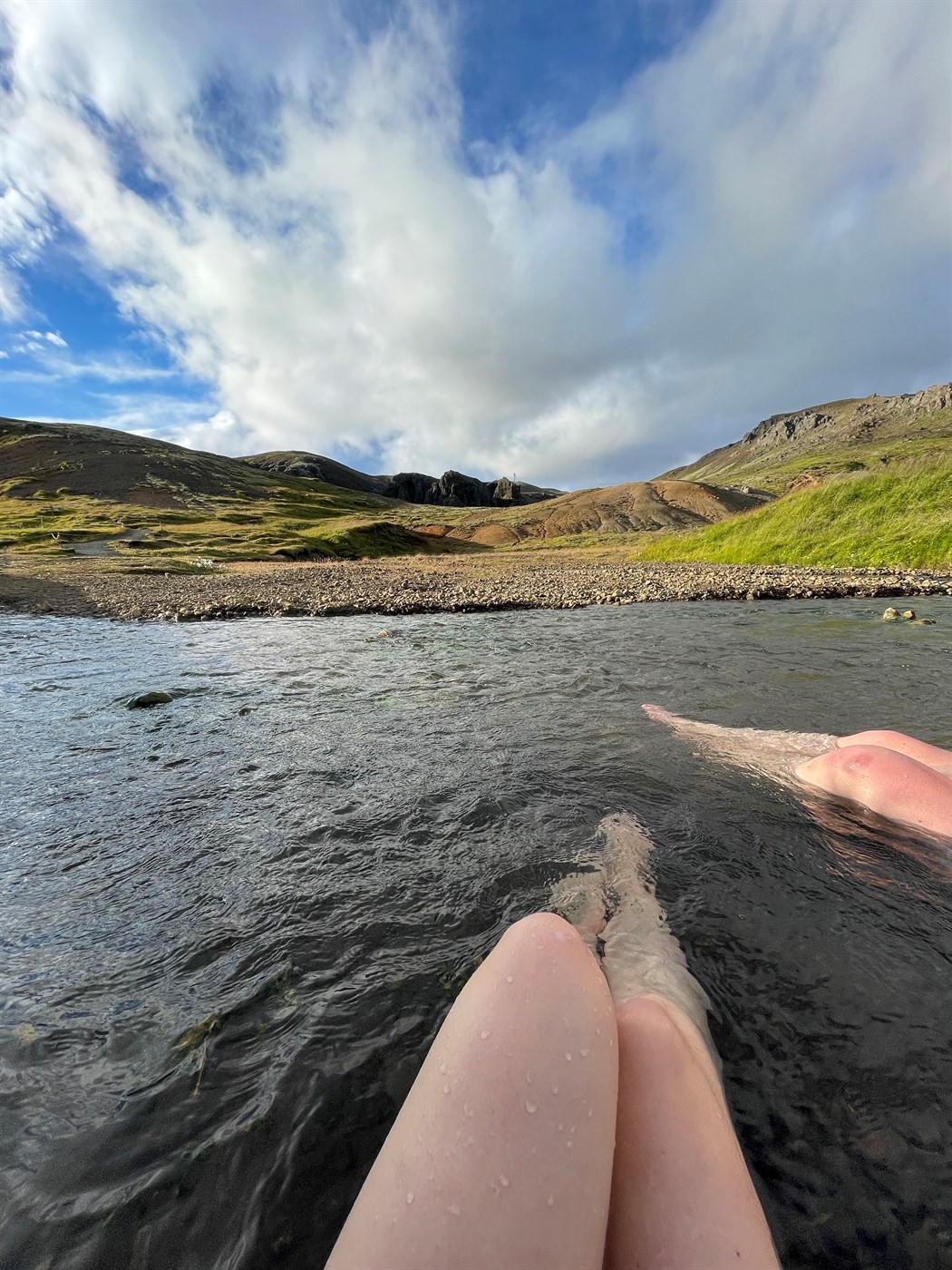
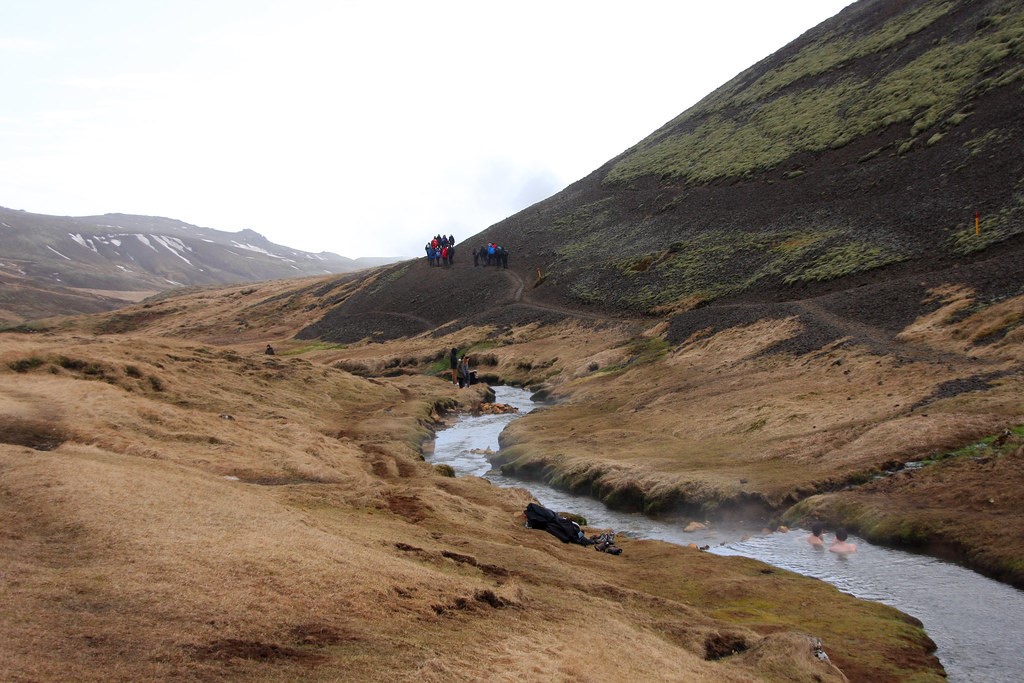
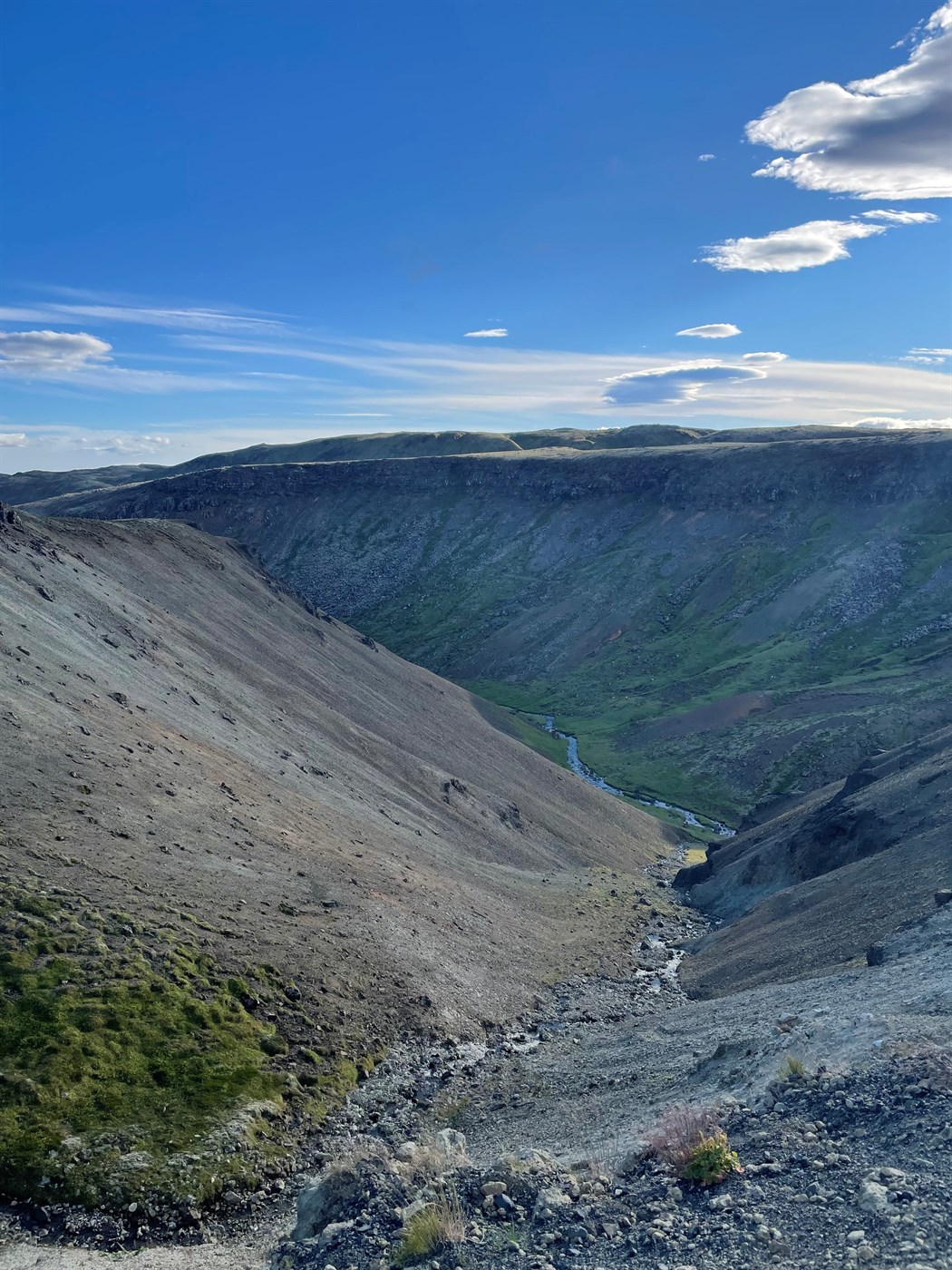
8. Mount Esja
- Duration: 2–4 hours
- Difficulty: Medium
- Distance: 8 km
- Ascent: 723 m
If you’ve been to Reykjavík, you’ve surely noticed Mount Esja, the flat-topped mountain that dominates the bay just north of the city. Not only is it one of the closest hikes to Reykjavík, but it also offers stunning panoramic views of the capital and its surroundings.
The trail is well-marked, and hikers can choose their stopping point based on difficulty.
If you want a moderate challenge, reaching the Steinn viewpoint is a great option. For those looking to push themselves, the final ascent to the summit is steeper and requires some scrambling.
9. Glymur Waterfall
- Duration: 3–4 hours
- Difficulty: Medium
- Distance: 7 km
- Ascent: 425 m
Glymur holds the title of Iceland’s second-highest waterfall, making it one of the most popular hikes in West Iceland. The trail to the falls is both scenic and adventurous, offering breathtaking views along the way.
Choosing Your Route
- The eastern trail is a straightforward out-and-back route.
- The northern trail forms a loop by connecting with the eastern side for a more varied experience.
⚠️ Be prepared: At some point, you’ll need to cross a river, so we highly recommend bringing water shoes and waterproof gear to avoid hiking in wet boots!
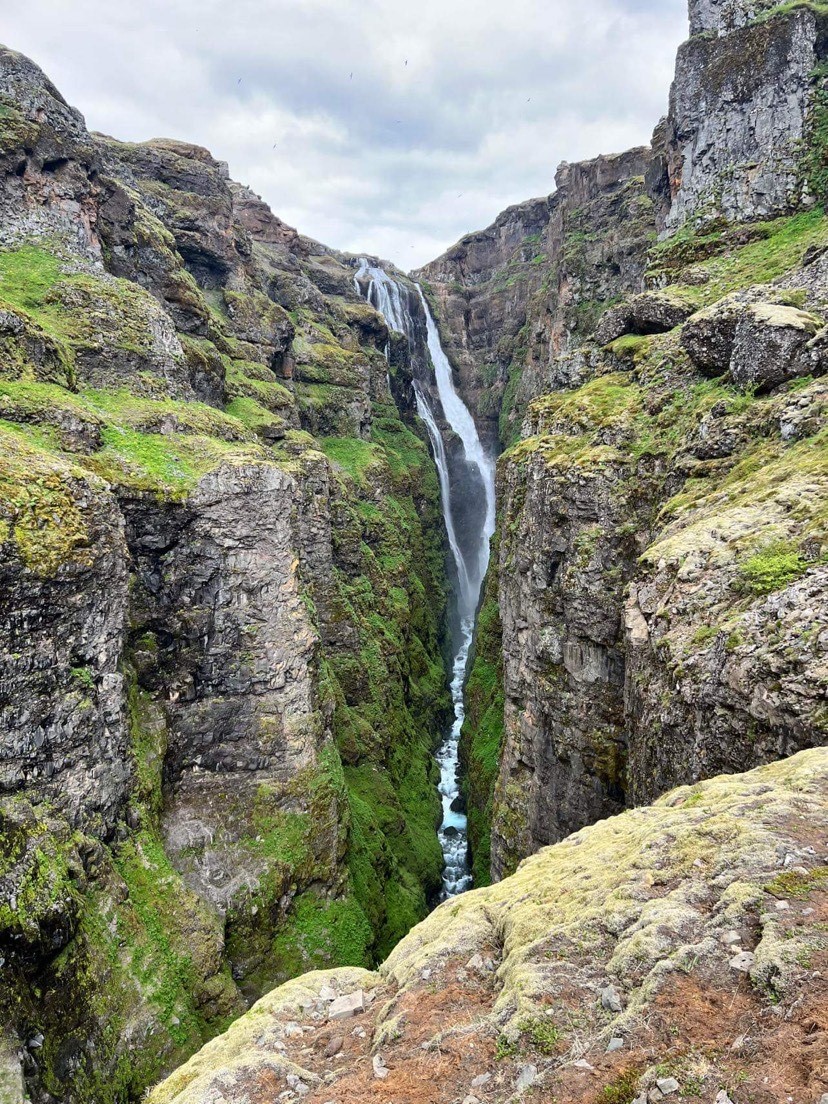
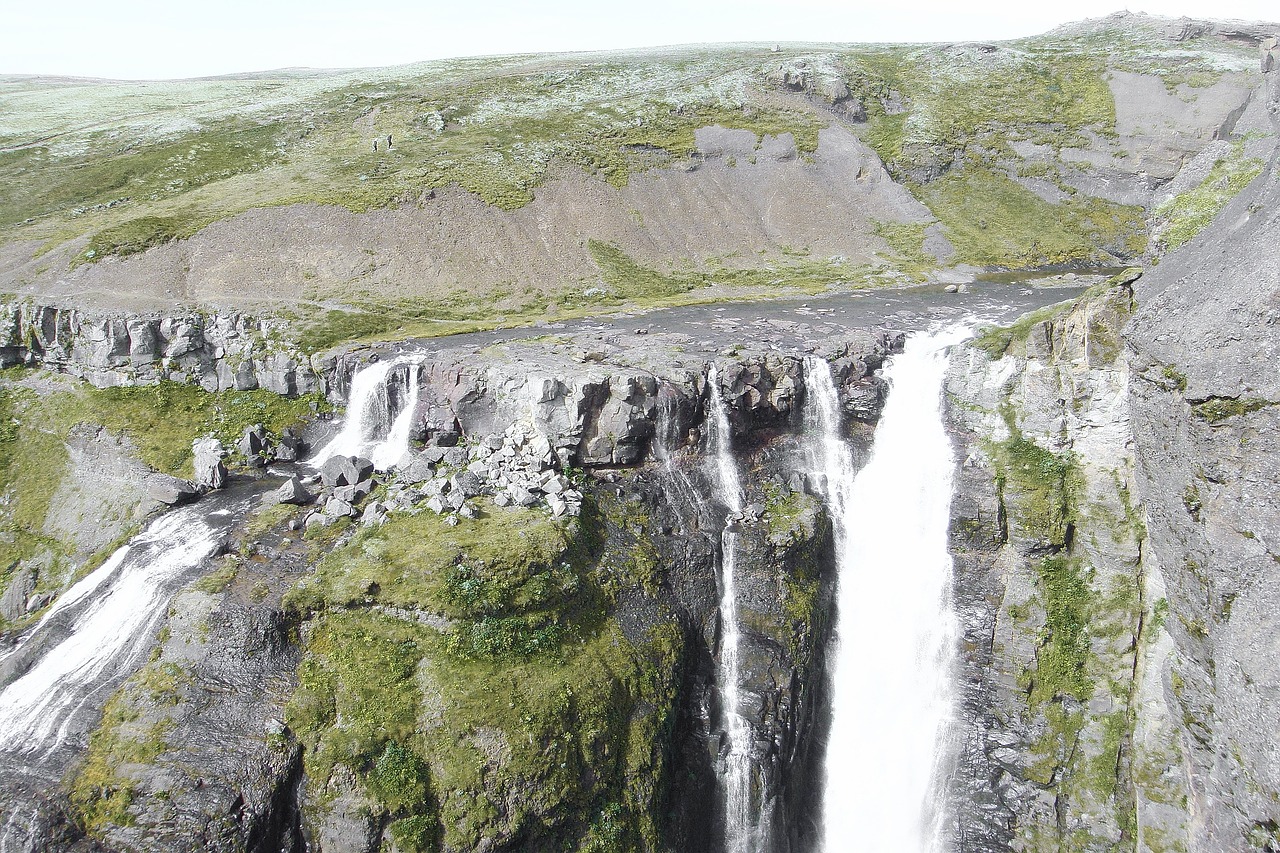
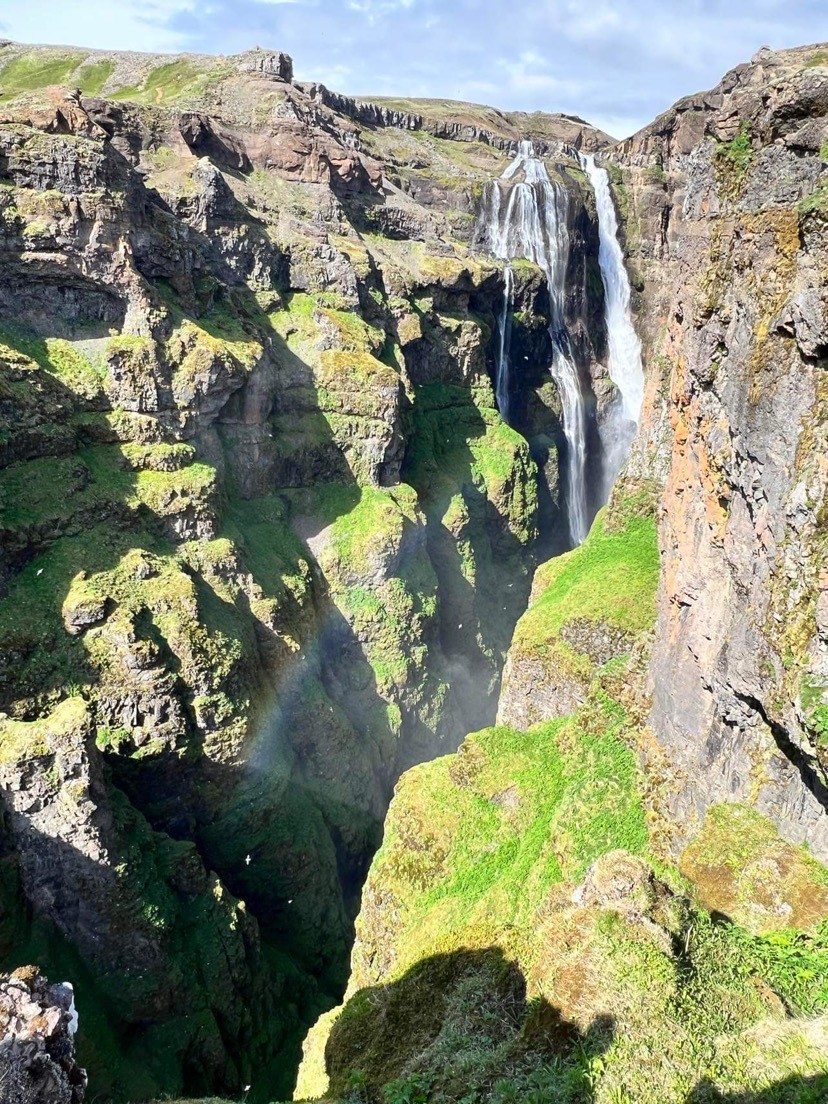
10. Stuðlagil Canyon
- Duration: 4 hours
- Difficulty: Easy
- Distance: 10 km
- Ascent: 500 m
Stuðlagil Canyon has rapidly become one of Iceland’s must-visit spots, drawing travelers eager to witness its surreal beauty.
With its striking basalt column formations and vivid turquoise waters, this place truly looks like something from another planet.
Two Ways to Visit Stuðlagil
There are two ways to experience the canyon:
- The easy way – A quick viewpoint visit without hiking.
- The scenic (and more rewarding) way – A hike through the canyon, offering stunning views from inside.
Since this is a hiking guide, we’ll focus on the second option!
How to Get There & Start the Hike
- The hiking trail starts from the eastern side of the river.
- Coming from the north, exit Road 1 and follow a gravel road (not an F-road, so a 4x4 isn’t required, but drive carefully – potholes can be hazardous for low-clearance vehicles).
- Eventually, you’ll reach a small bridge with parking – this is the main starting point for the hike.
- If you have a 4x4, you can drive a bit further to another parking area, shortening the hike.
The full hike from the first parking lot takes about 2 hours one way, so plan accordingly.
What to Expect at the Canyon
- Once you arrive, you’ll need to climb down using a rope to reach the canyon floor. This descent isn’t recommended for young children, as the basalt columns have large gaps that require careful footing and a certain height to climb safely.
- Check the weather before you go! If there has been heavy rain, some rivers crossing the trail can become impassable, making the hike risky or even impossible.
If conditions are good and you’re up for an adventure, Stuðlagil Canyon is absolutely worth the effort.
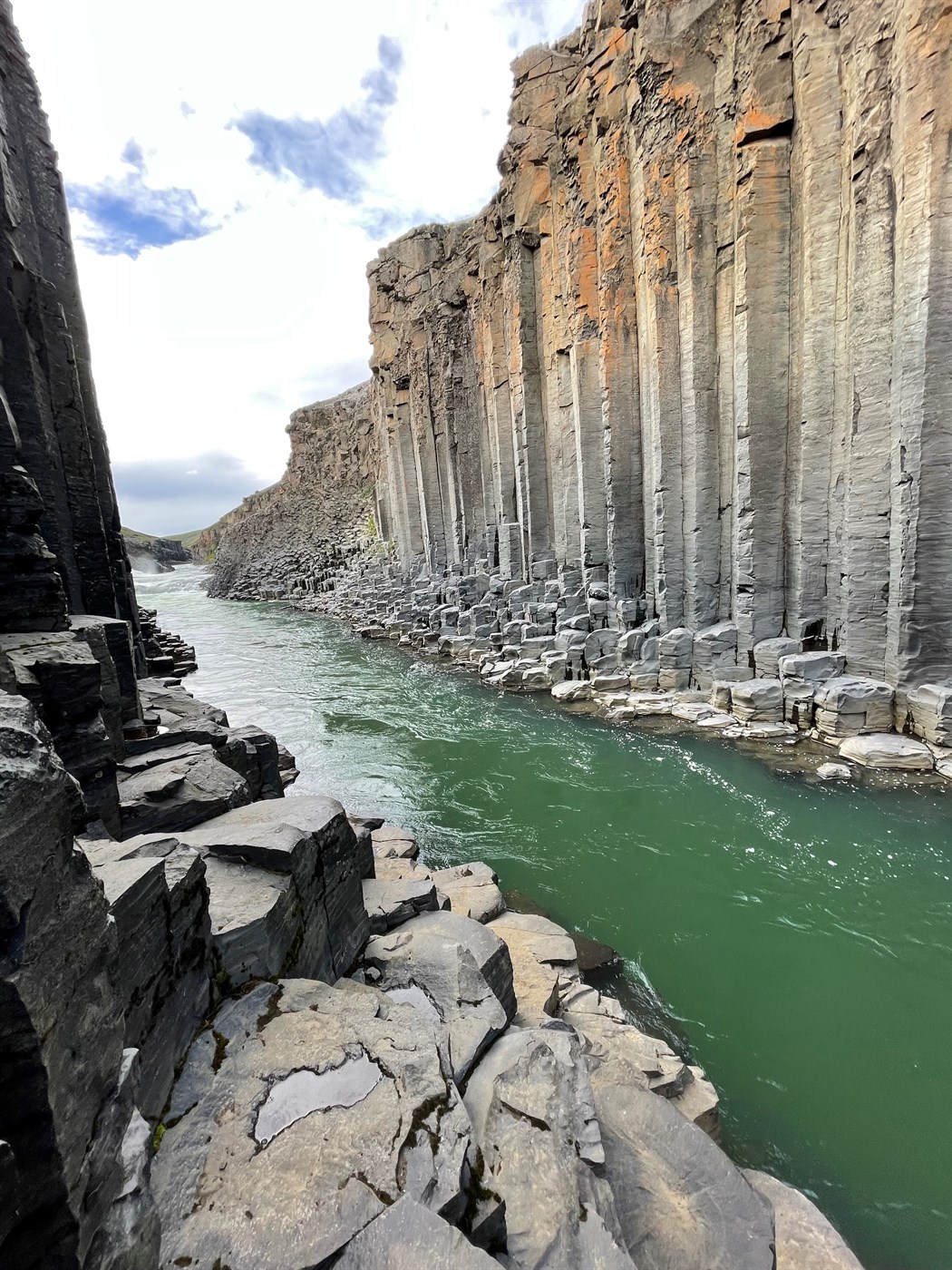
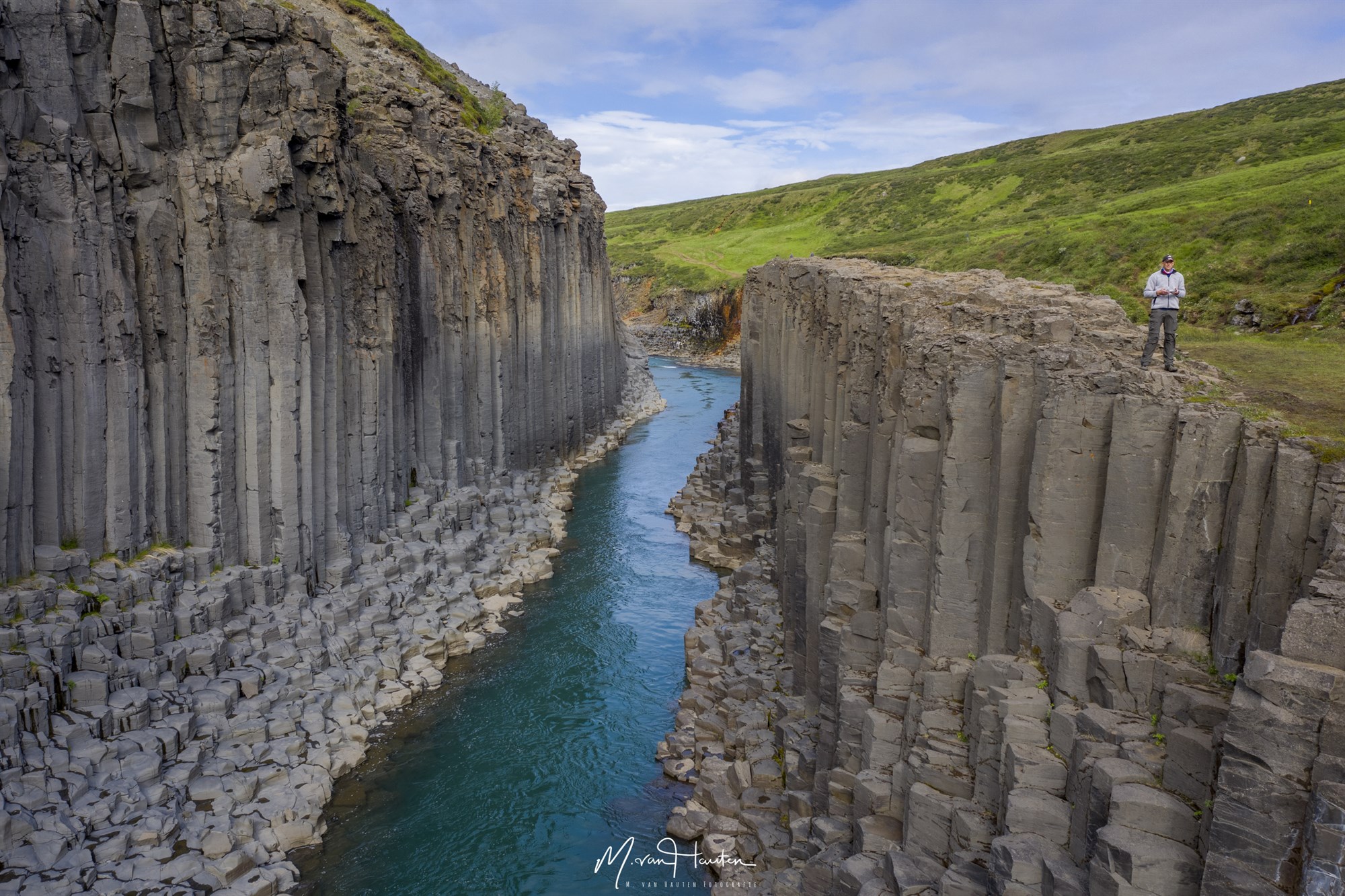
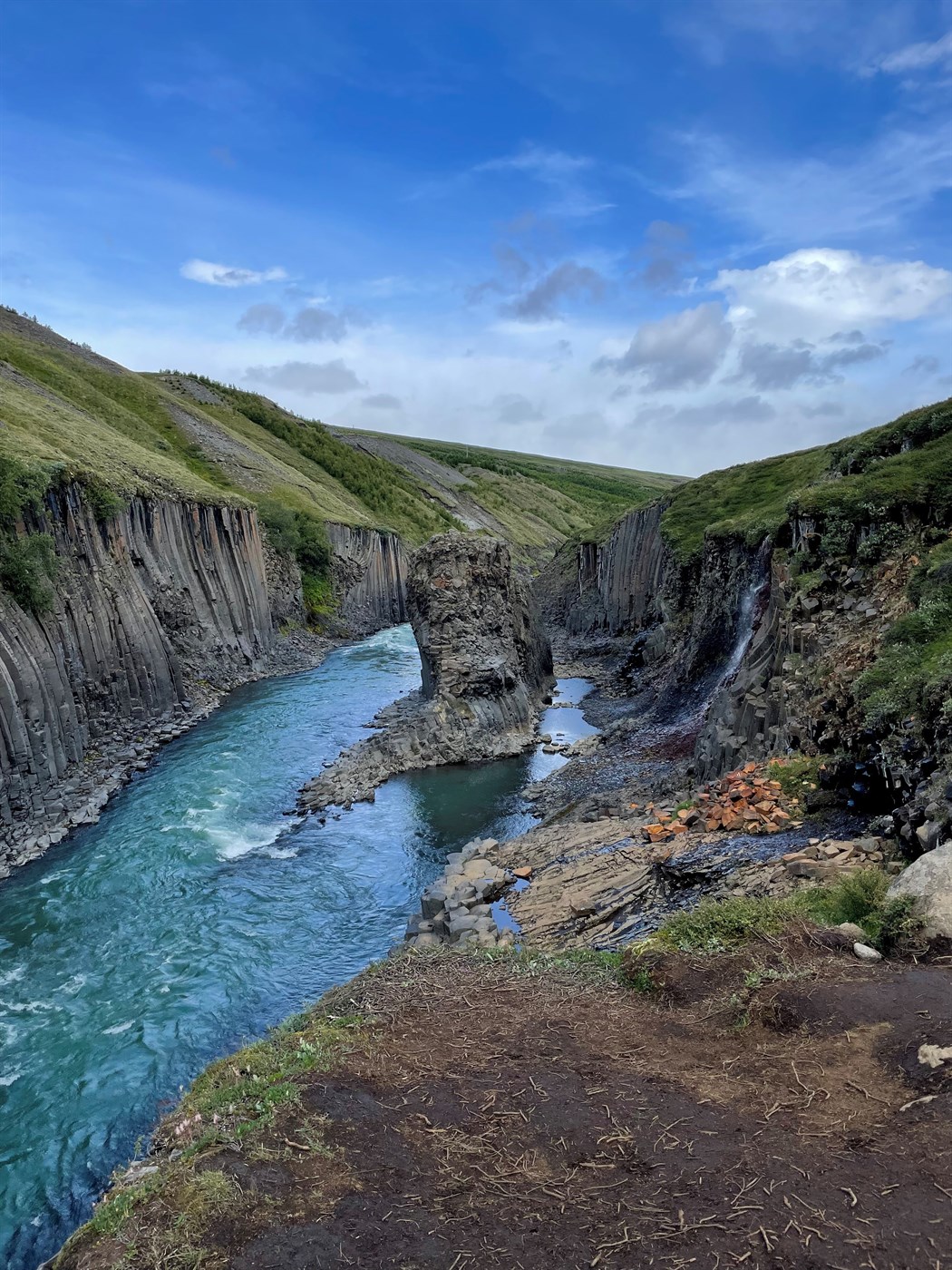
11. Ásbyrgi
- Duration: 3–4 hours
- Difficulty: Medium-Difficult
- Distance: 14 km
- Ascent: 500 m
Ásbyrgi Canyon is one of the highlights of the Diamond Circle, offering some of the most breathtaking landscapes in North Iceland.
Once carved out by a massive glacial flood, this horseshoe-shaped canyon is now known for its lush forests, towering cliffs, and panoramic viewpoints – often nicknamed "Iceland’s Grand Canyon".
Hiking the Ásbyrgi Loop
The hiking trail takes you to the canyon’s highest point, offering stunning views over the valley. You have two options:
- Complete the full loop for a more immersive experience.
- Turn back halfway and return to the starting point.
Where to Stay
At the main trailhead, you’ll find a small, cozy campsite – the perfect spot to spend the night after an epic hike.
Ásbyrgi is a must-visit stop on any Diamond Circle itinerary, and this hike is the best way to take in its dramatic beauty.
Multi-day hikes/treks
1. Laugavegur Trail
- Duration: 4–5 days
- Difficulty: Difficult
- Distance: 54 km
- Ascent: 1,702 m
The Laugavegur Trail is Iceland’s most famous multi-day hike, stretching 54 km from Landmannalaugar to Þórsmörk.
This legendary trek takes hikers through some of the country’s most diverse and breathtaking landscapes, from colorful rhyolite mountains and steaming hot springs to black sand deserts and lush green valleys.
Who Is This Hike For?
If you’re a seasoned hiker who enjoys a challenge, this trail is for you. It requires good stamina, proper gear, and careful planning, but the reward is an unforgettable adventure.
How to Get There
Many of our KuKu customers choose to do this trek before or after renting a campervan. Here’s why:
- To reach Landmannalaugar, where the trail starts, you need either a 4x4 vehicle or a shuttle bus from Reykjavík.
- If you drive yourself, you’ll have to leave your vehicle behind and then find a way back to retrieve it after finishing the trek in Þórsmörk – which is quite a detour!
- Why leave your awesome KuKu campervan behind when you could be road-tripping instead?
Guided Tours for Extra Safety
If you want to experience the Laugavegur Trail with expert guidance, consider booking a guided tour. Companies like Icelandic Mountain Guides offer well-organized treks, ensuring you stay safe and well-equipped throughout the journey.
One thing’s for sure – this is a once-in-a-lifetime hike, so don’t forget your camera to capture the unreal landscapes you’ll encounter along the way!
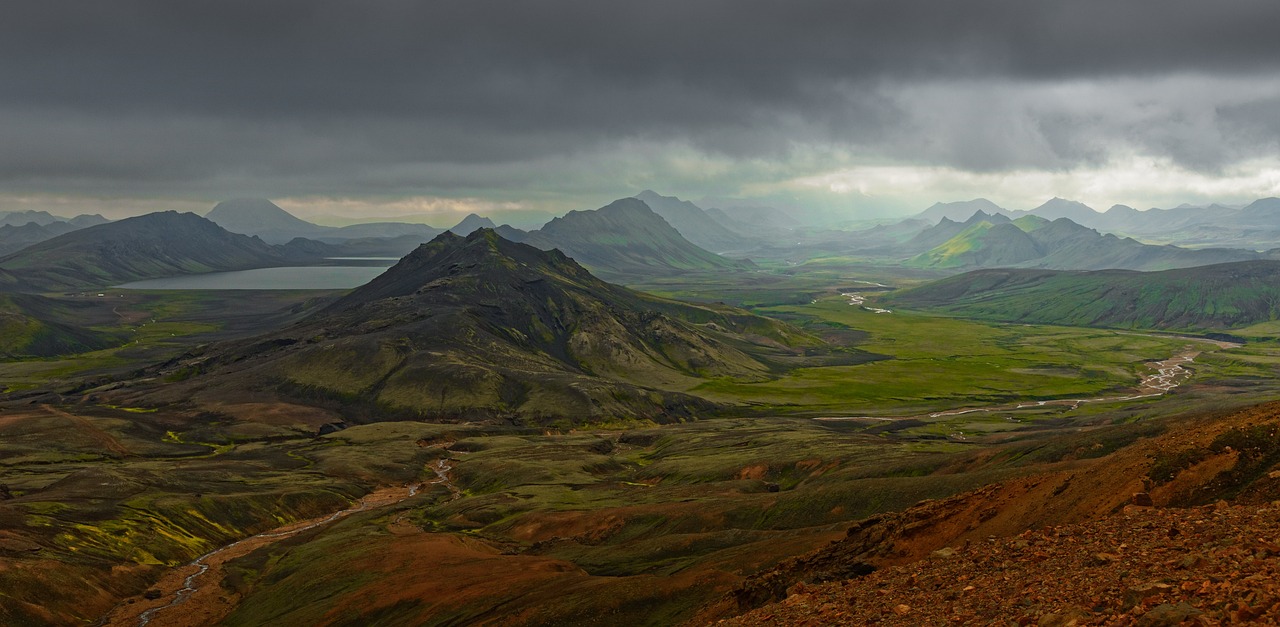
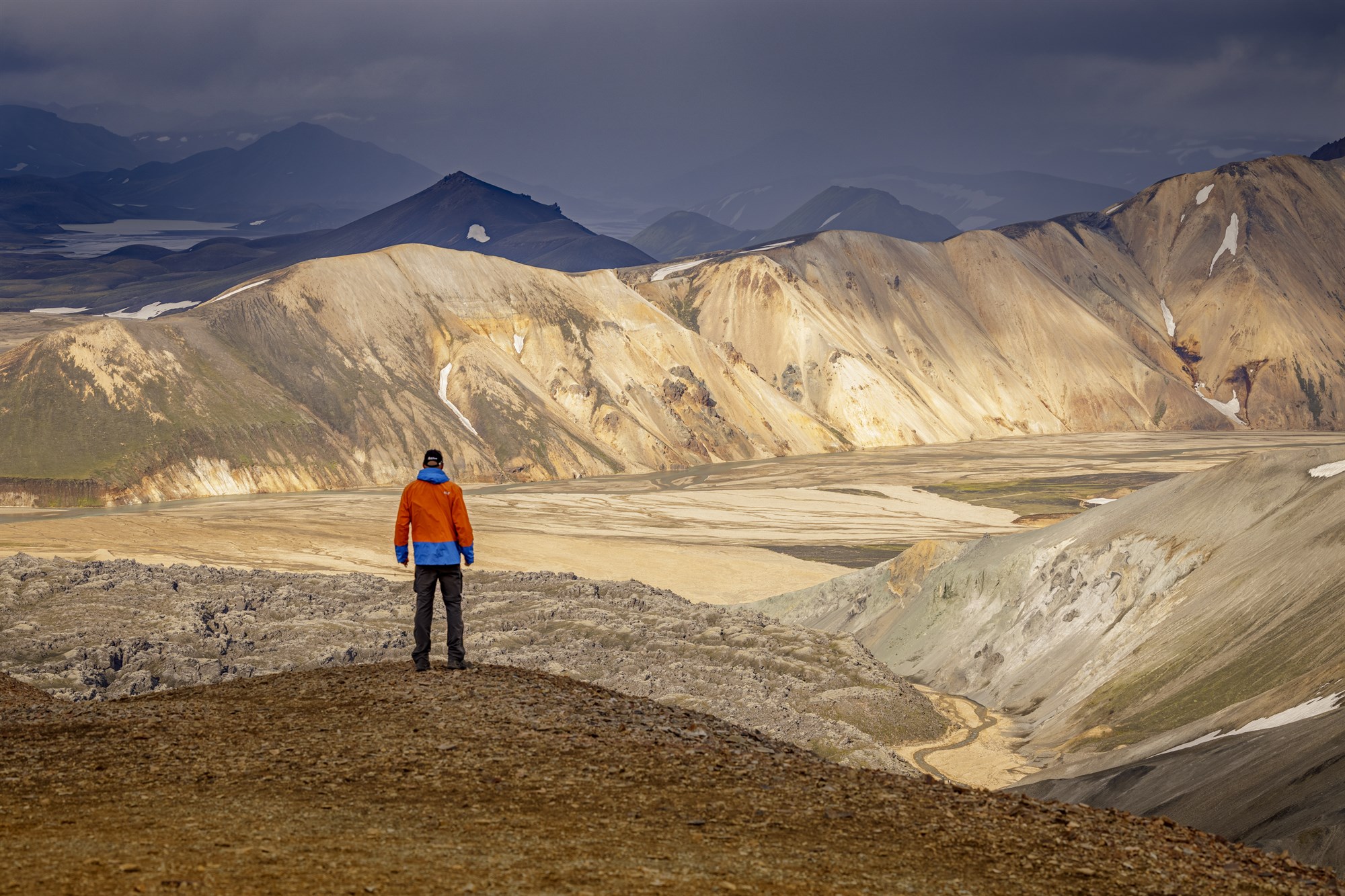
2. Hornstrandir Nature Reserve
Located in Iceland’s northernmost peninsula, Hornstrandir Nature Reserve is a haven for wildlife lovers and adventure seekers.
This untouched wilderness is home to a thriving population of Arctic foxes, as well as seabirds, seals, and field mice. With over 270 species of ferns and flowering plants, including some rare finds, this reserve is a paradise for nature enthusiasts.
How to Get to Hornstrandir
The biggest challenge of exploring Hornstrandir isn’t the hike itself – it’s getting there.
🚢 The only way in? By ferry.
- Ferries depart from Ísafjörður and are operated by companies like Borea or Sjóferðir.
- Cost: Expect to pay 80–120 EUR one way, meaning a round trip can cost anywhere from 160 EUR to 240 EUR.
- No roads, no cars – once you’re in, it’s just you and the wild.
For those who prefer a guided experience, several companies offer organized tours that provide expert navigation and insights into the region’s rich biodiversity.
Why Hike in Hornstrandir?
This is one of the most remote and untouched areas of Iceland, making it a perfect destination for hikers looking for a true off-the-grid adventure. Whether you’re here for the wildlife, the rugged landscapes, or the complete isolation, Hornstrandir is as raw and wild as it gets.
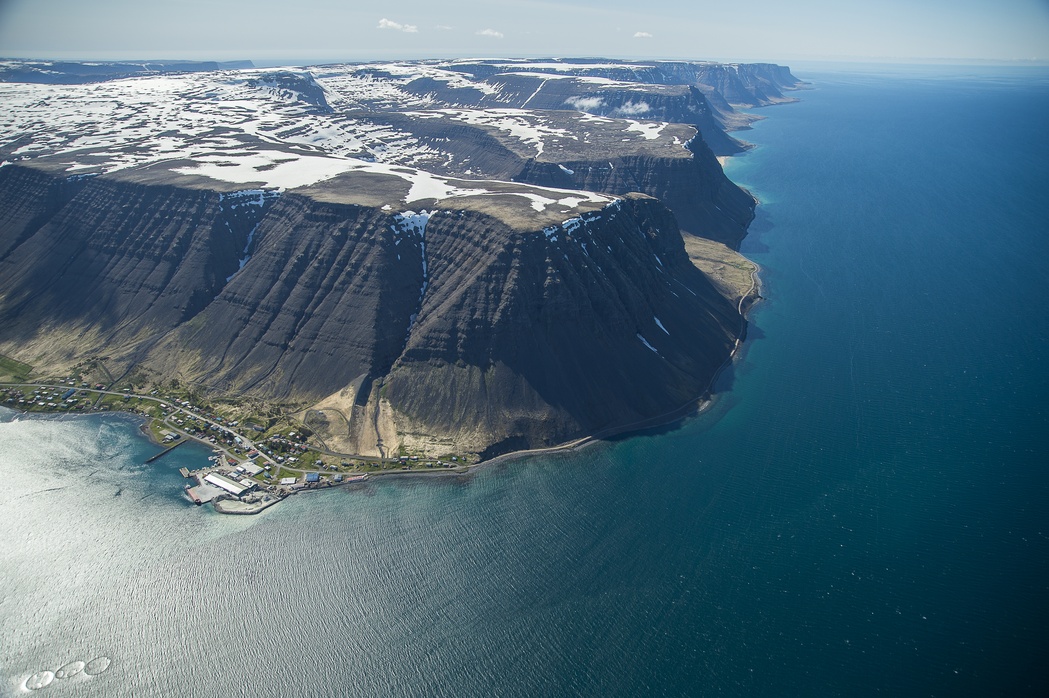
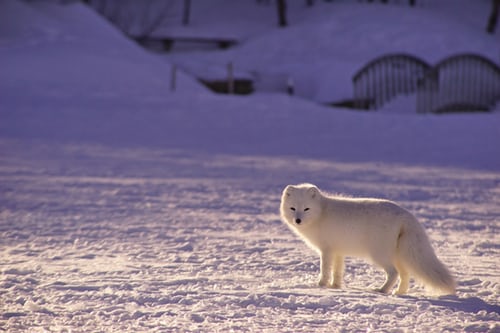
3. Víknaslóðir ("The Trails of the Inlets")
- Duration: 4–5 days
- Difficulty: Difficult-Challenging
- Distance: 74 km
- Ascent: 2,498 m
Víknaslóðir isn’t a single defined trail like Laugavegur – rather, it’s a vast network of hiking routes weaving through the breathtaking landscapes of East Iceland. This trek typically starts in Bakkagerði and ends in Seyðisfjörður, taking about five days to complete.
What Makes This Trek Unique?
- Unlike more structured multi-day treks, Víknaslóðir offers multiple route options, making it a more flexible yet challenging adventure.
- Expect a mix of dramatic fjords, rugged coastline, remote valleys, and wild mountain landscapes.
- The most well-known route is marked, but navigation is still crucial.
Important Notes for Hikers
- Bring a physical map! While the trail is marked, phone batteries die and signal coverage is unreliable in these remote areas.
- Be prepared for steep ascents, unpredictable weather, and isolation – this hike is only for those who are well-equipped and experienced.
- If you prefer a guided trek, Icelandic Mountain Guides offers organized tours to help you safely explore the region.
If you’re looking for a challenging, off-the-beaten-path adventure, Víknaslóðir delivers an unforgettable East Iceland wilderness experience.
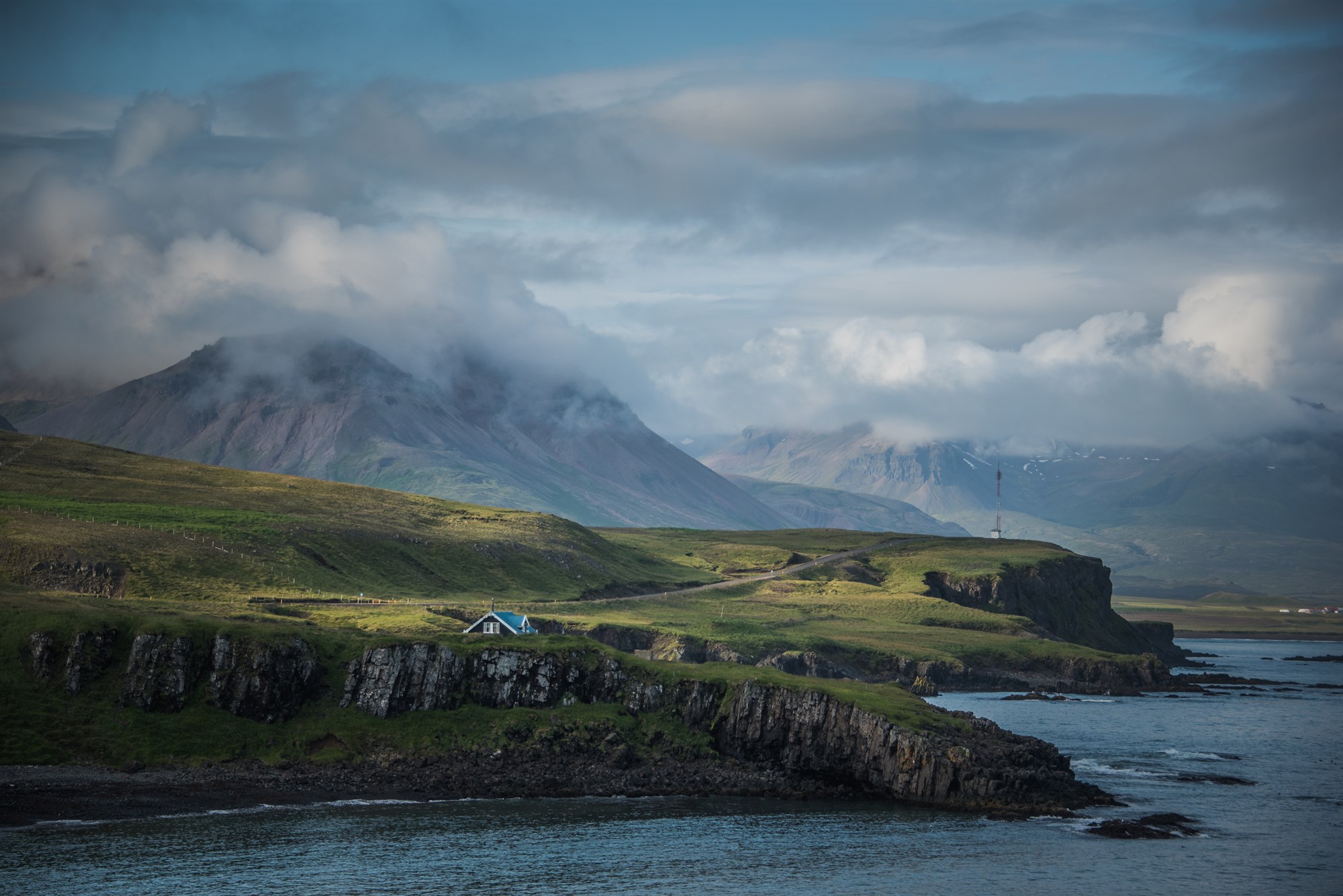
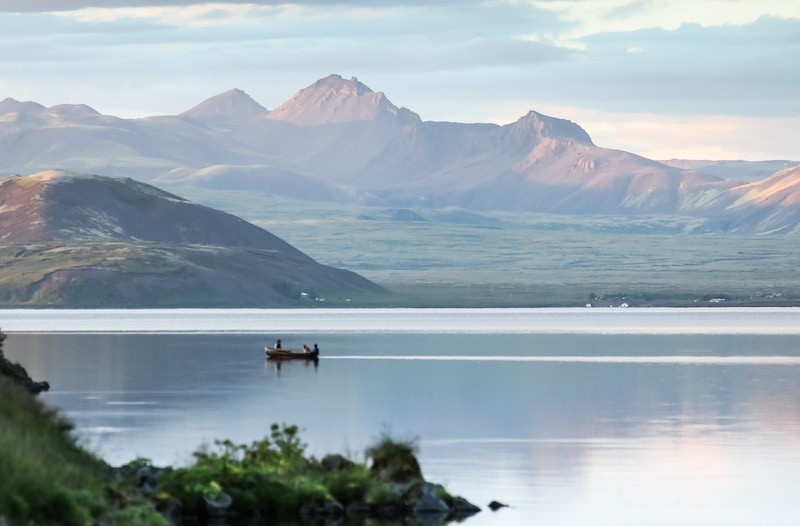
4. Fimmvörðuháls
- Duration: 2 days
- Difficulty: Medium-Difficult
- Distance: 26 km
- Ascent: 1,291 m
If you’re looking for a trek that never gets boring, the Fimmvörðuháls trail is the perfect choice. This epic 2-day hike starts at the iconic Skógafoss waterfall and takes you through a landscape like no other – featuring 26 waterfalls, a volcano, and two glaciers along the way!
What to Expect on the Trail
- Day 1: Begin at Skógafoss and follow the Skóga River, passing countless waterfalls as you ascend toward Fimmvörðuháls Pass.
- Day 2: Cross the volcanic terrain between Eyjafjallajökull and Mýrdalsjökull glaciers, descending into Þórsmörk, a lush valley surrounded by dramatic mountain ridges.
Where to Stay
There are several campsites along the way, but not all are fully equipped. A great option is to spend the night in your camper at Skógar Campsite before starting the trek – waking up to the sight of Skógafoss is an experience in itself!
This trail is one of Iceland’s most varied and rewarding hikes, offering an incredible mix of waterfalls, glaciers, and volcanic landscapes. Definitely a must-do for adventurous hikers!
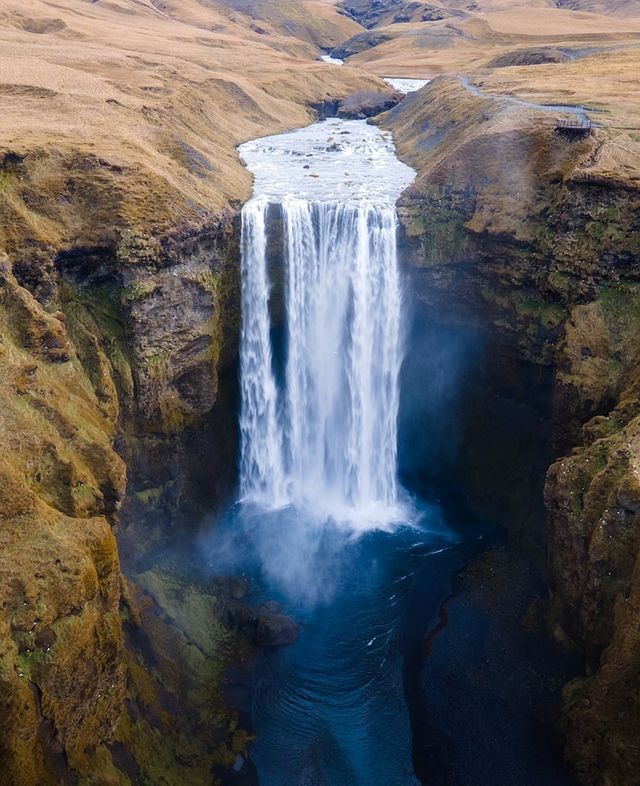
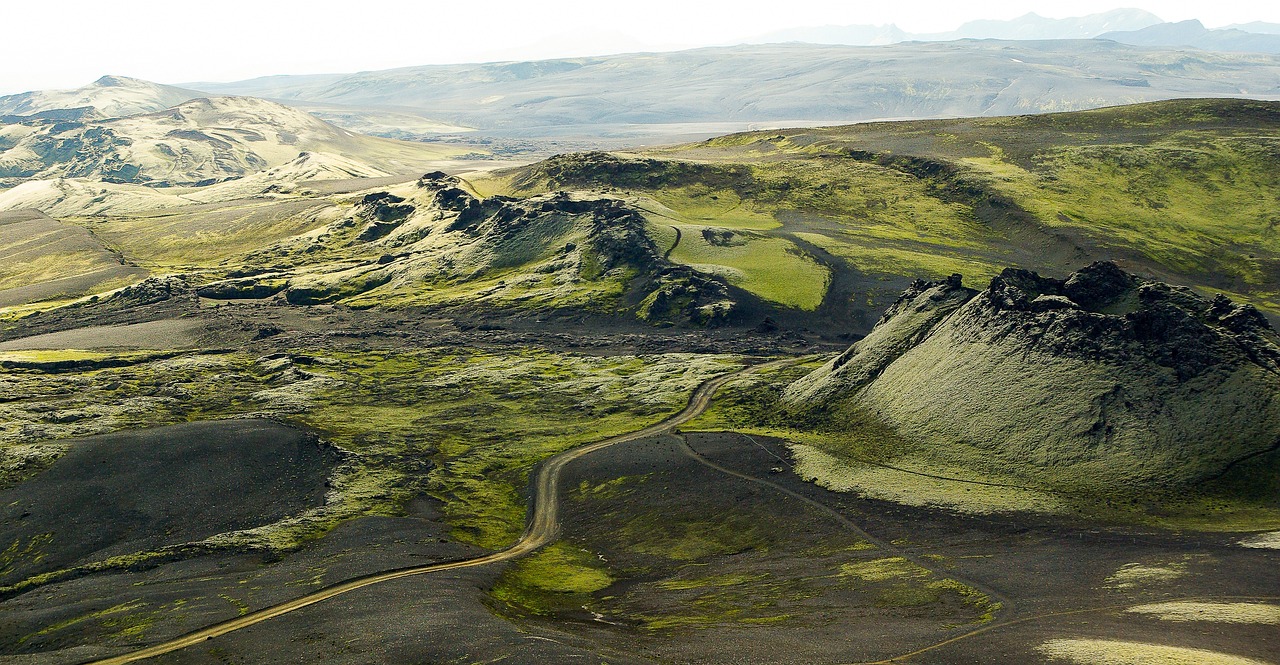
5. Askja Trail
- Duration: 5 days
- Difficulty: Difficult-Challenging
- Distance: 95 km
For those seeking a true Icelandic Highland experience, the Askja Trail is one of the most breathtaking and remote treks in the country. This route takes you through a constantly changing landscape, from lava fields and waterfalls to the otherworldly Askja caldera, home to Iceland’s legendary Víti crater lake.
What Makes This Trek Special?
- Fewer tourists, more solitude – This hidden gem remains off the beaten path, making it ideal for those looking to experience the vast, silent beauty of the Highlands without crowds.
- Raw, untouched landscapes – Expect volcanic deserts, glacier-fed rivers, and ancient lava formations, creating a sense of true wilderness.
Challenges & Navigation
- Minimal infrastructure – Unlike more popular trails, accommodation and facilities are scarce, so hikers must be self-sufficient.
- Unmarked paths – The route can be difficult to follow, with trails often fading into the landscape. A detailed map and GPS are essential.
- Extreme remoteness – You’ll be trekking through one of the most isolated areas in Iceland, so proper preparation is non-negotiable.
Guided vs. Independent Hiking
Like other Highlands treks, you can either hike independently or with a guided tour, depending on your experience level and confidence in navigating remote terrain.
The Askja Trail is not for beginners, but for those seeking a true adventure in Iceland’s wildest landscapes. Trust us: It’s an unforgettable experience.
